The Tudor style, known for its charming, old-world appeal, extends seamlessly into kitchen design. By blending classic elements with modern functionality, Tudor kitchens create spaces that feel both timeless and inviting. These 25 Tudor kitchen ideas will inspire your design choices, offering insights on how to infuse historical elegance while maintaining practical utility. Whether you're renovating or starting from scratch, these ideas provide solutions to create a kitchen that balances beauty and practicality. Prepare to transform your cooking space into a cozy, functional haven with these Tudor-inspired tips.
1. Embrace Exposed Wooden Beams
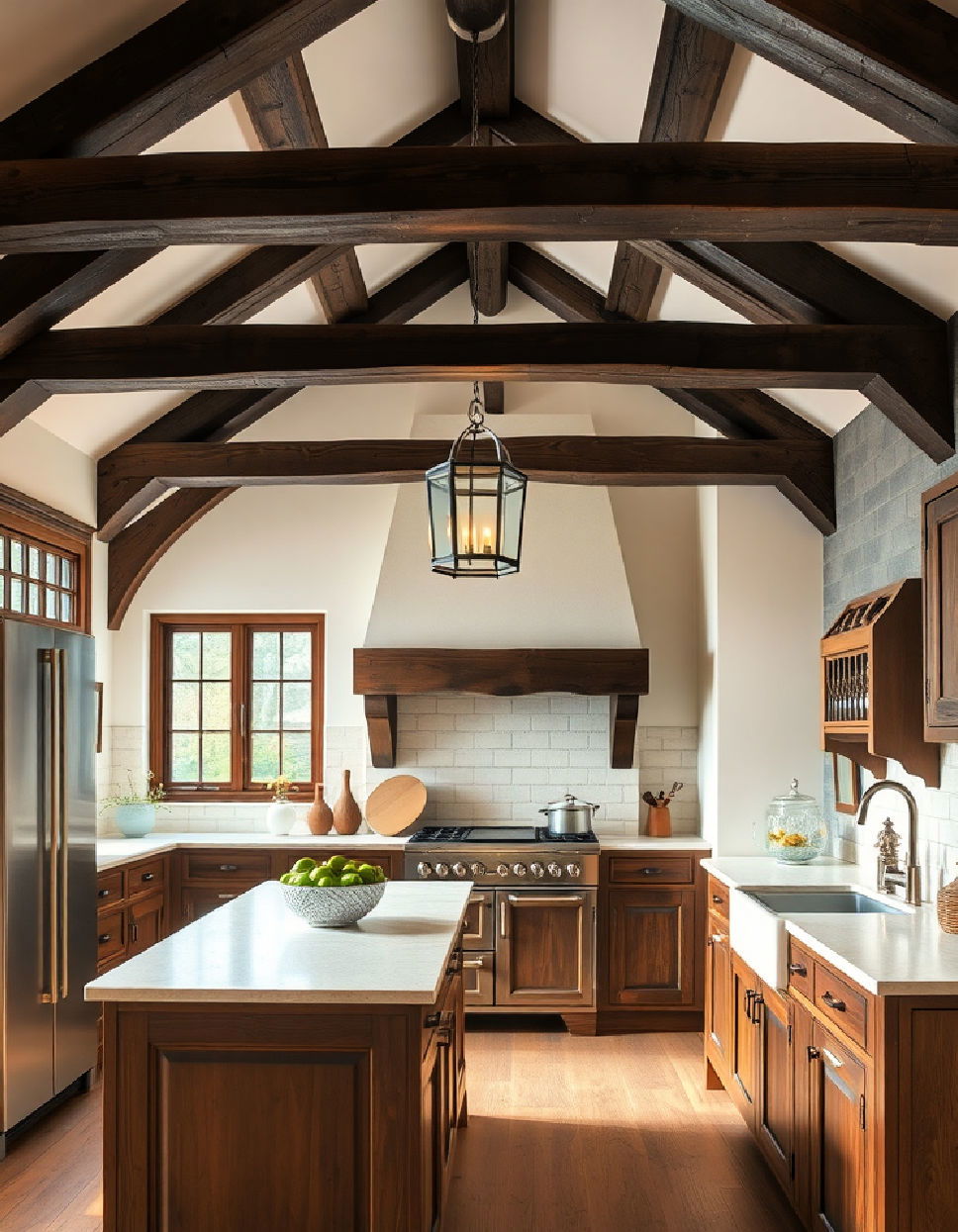
Exposed wooden beams are a quintessential element in Tudor kitchen design. Their rustic charm adds architectural depth, creating a welcoming atmosphere. Not only do they bring a historic touch to your kitchen, but they also contribute to a warm, earthy aesthetic. Whether you choose dark oak for a traditional look or lighter wood for a more modern twist, exposed beams anchor the space and set the tone for the rest of your design.
2. Opt for Dark, Rich Cabinetry
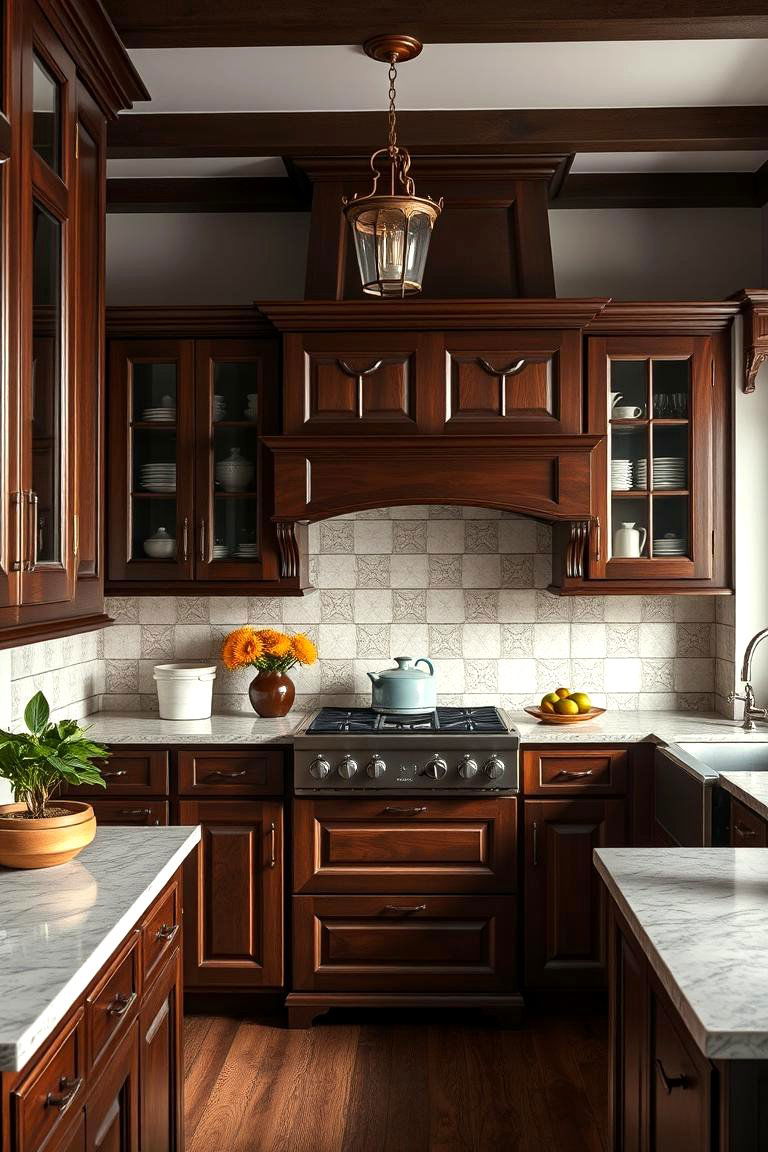
Tudor kitchens often feature deep, rich wood cabinetry, creating a sophisticated yet cozy atmosphere. Dark walnut, mahogany, and cherry are excellent choices for cabinetry, providing a refined and timeless feel. To elevate this design, consider mixing wood finishes, such as pairing dark cabinets with lighter countertops, which can help prevent the space from feeling too heavy while maintaining its traditional character.
3. Incorporate Stone Elements
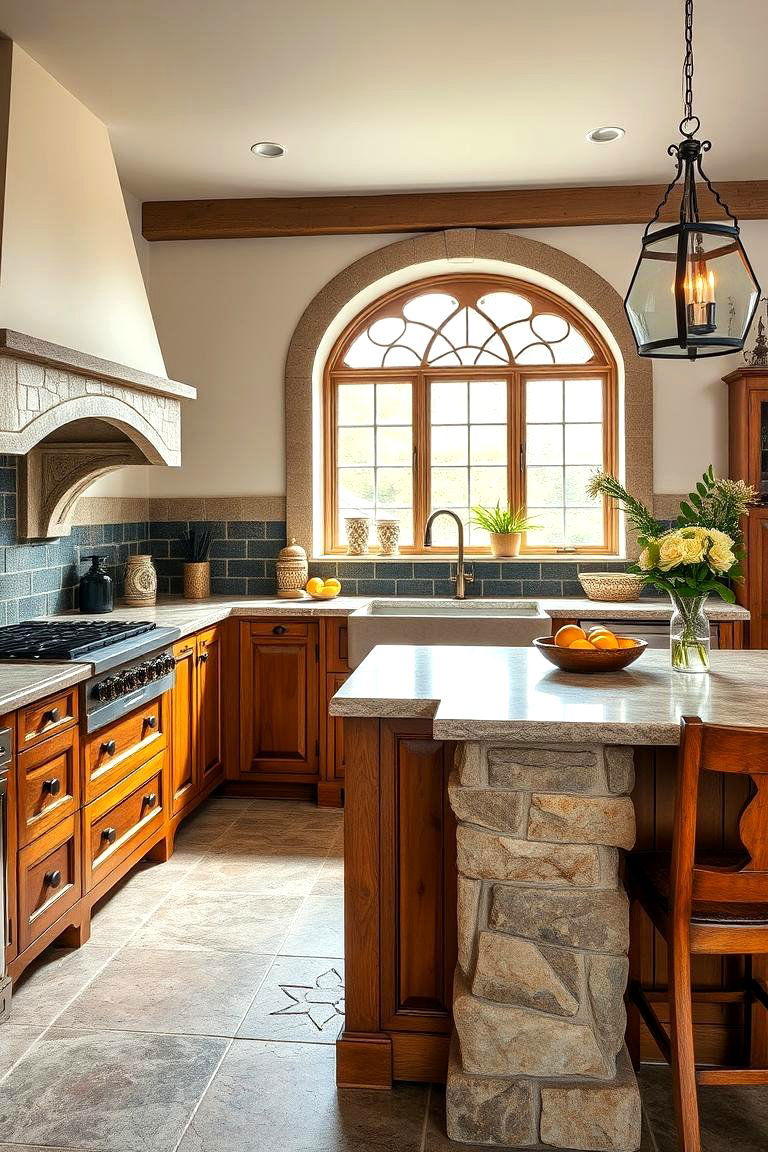
Stone elements, whether in countertops or backsplashes, are a staple of Tudor kitchens. Natural stone, such as limestone or slate, offers durability and brings an organic, earthy feel to the space. A stone fireplace or a stone-accented island adds both function and visual interest. The rough texture and muted colors of stone balance the warmth of wooden beams, creating a harmonious blend of materials that evoke classic Tudor charm.
4. Focus on Heavy, Intricate Hardware
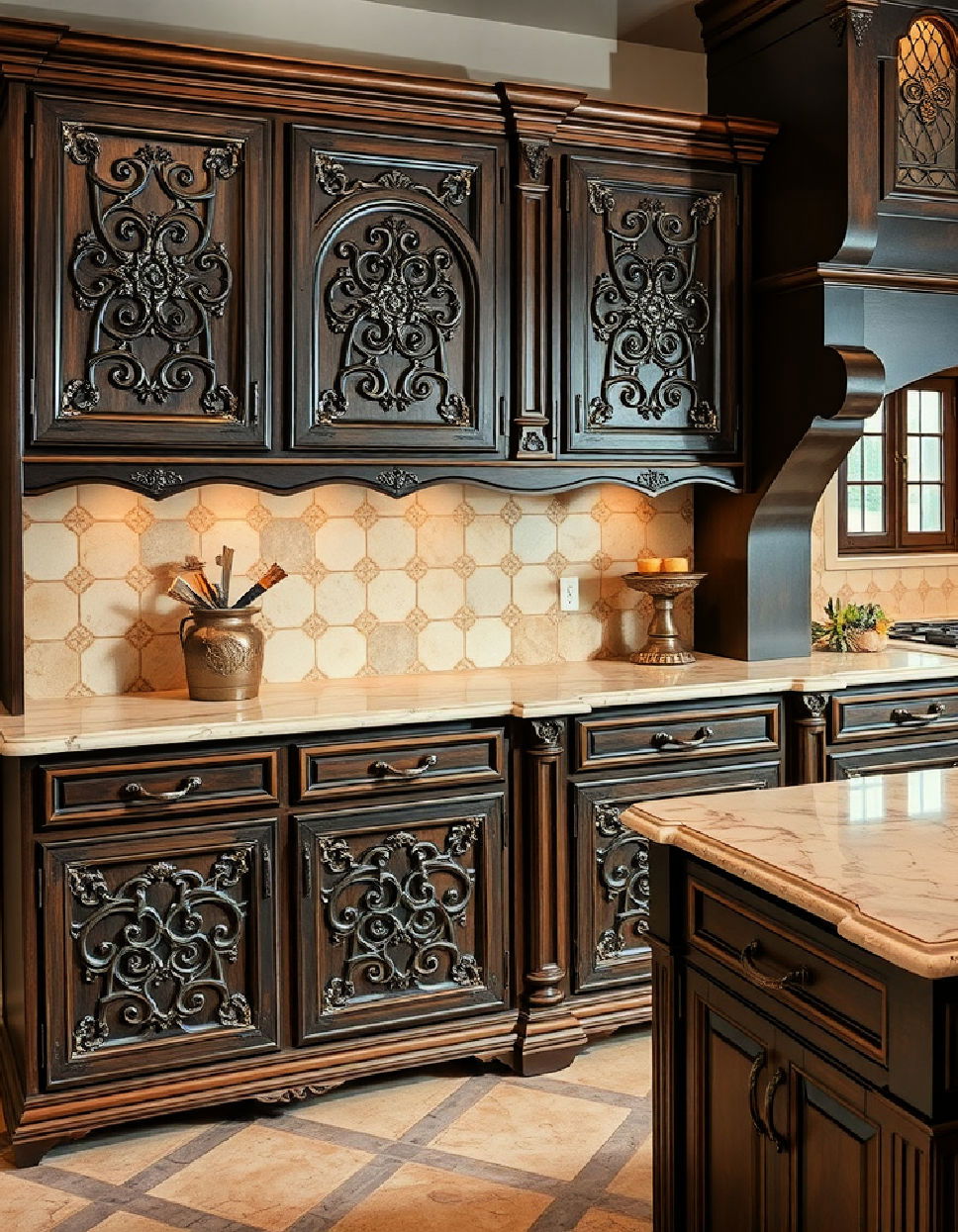
The hardware in a Tudor kitchen can significantly enhance its old-world appeal. Look for wrought iron, bronze, or brass handles and knobs that reflect the period’s craftsmanship. Intricate, medieval-inspired designs on drawer pulls or cabinet latches create focal points and add to the overall character of the space. These small details, when thoughtfully chosen, can elevate the entire kitchen’s aesthetic.
5. Choose Classic, Mosaic Tile Floors
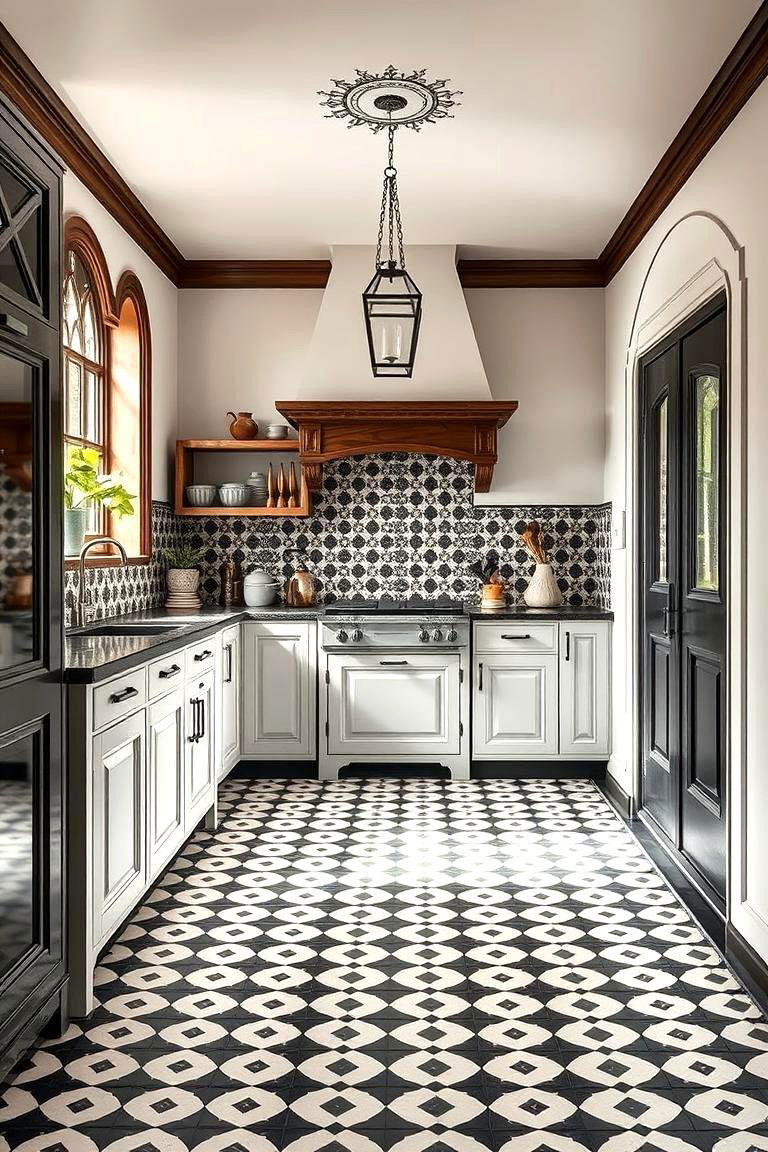
Classic mosaic tile floors are a beautiful way to add historical authenticity to a Tudor kitchen. Traditional black and white patterns work well, offering a striking contrast while maintaining elegance. Alternatively, opt for terra cotta or patterned ceramic tiles that evoke the charm of the Tudor period. This type of flooring provides visual interest, durability, and an easy-to-maintain surface, making it both practical and stylish.
6. Install a Traditional Butler’s Pantry
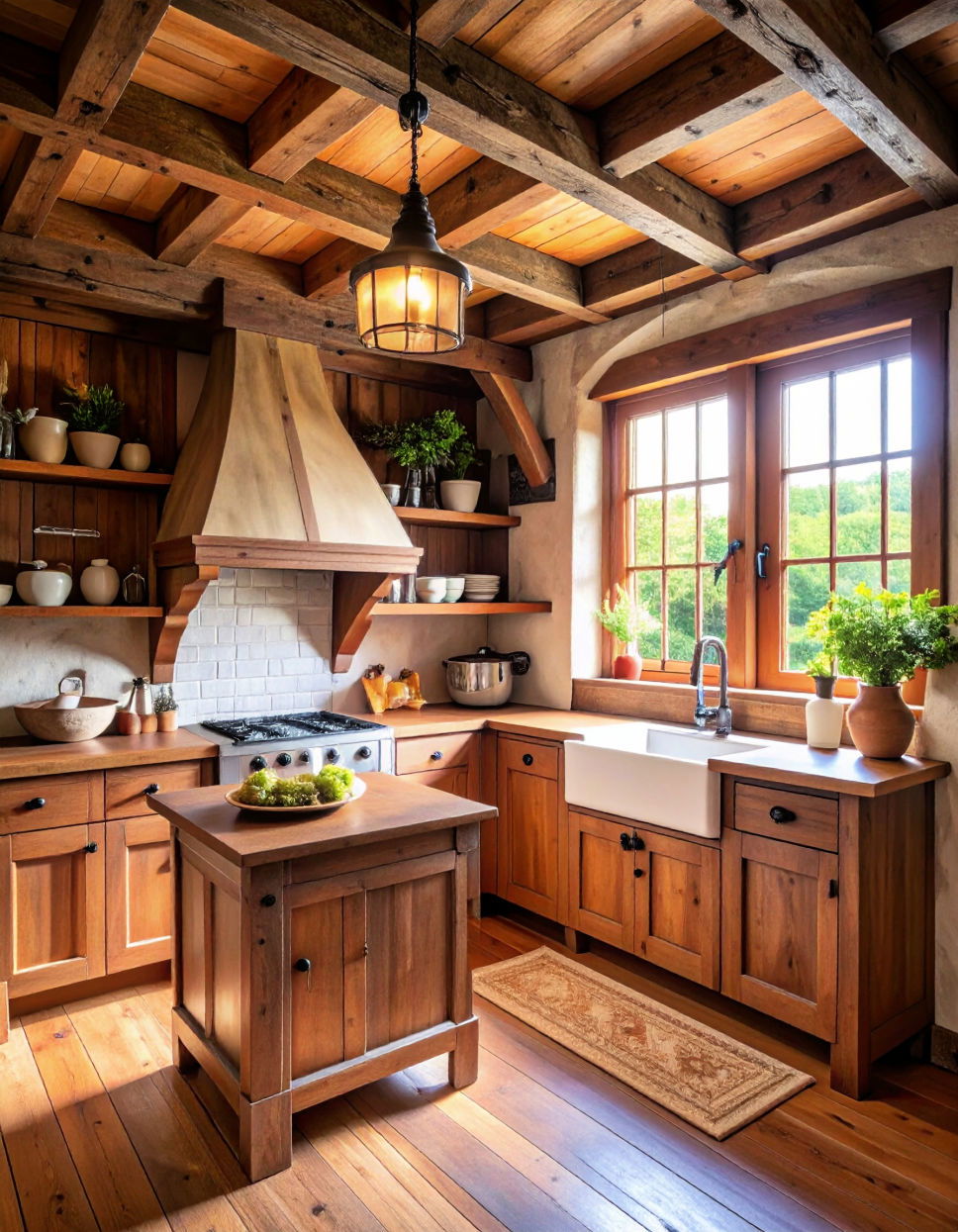
A traditional butler’s pantry is a hallmark of Tudor kitchens, offering both function and flair. This separate space is perfect for storing food, kitchen tools, or even dishes, helping to keep your main kitchen area uncluttered. The pantry’s design often features wood shelving, cabinetry, and sometimes even a small sink. Adding a butler’s pantry to your kitchen not only enhances its practicality but also reflects the historical sensibility of Tudor homes.
7. Add Leaded Glass Windows
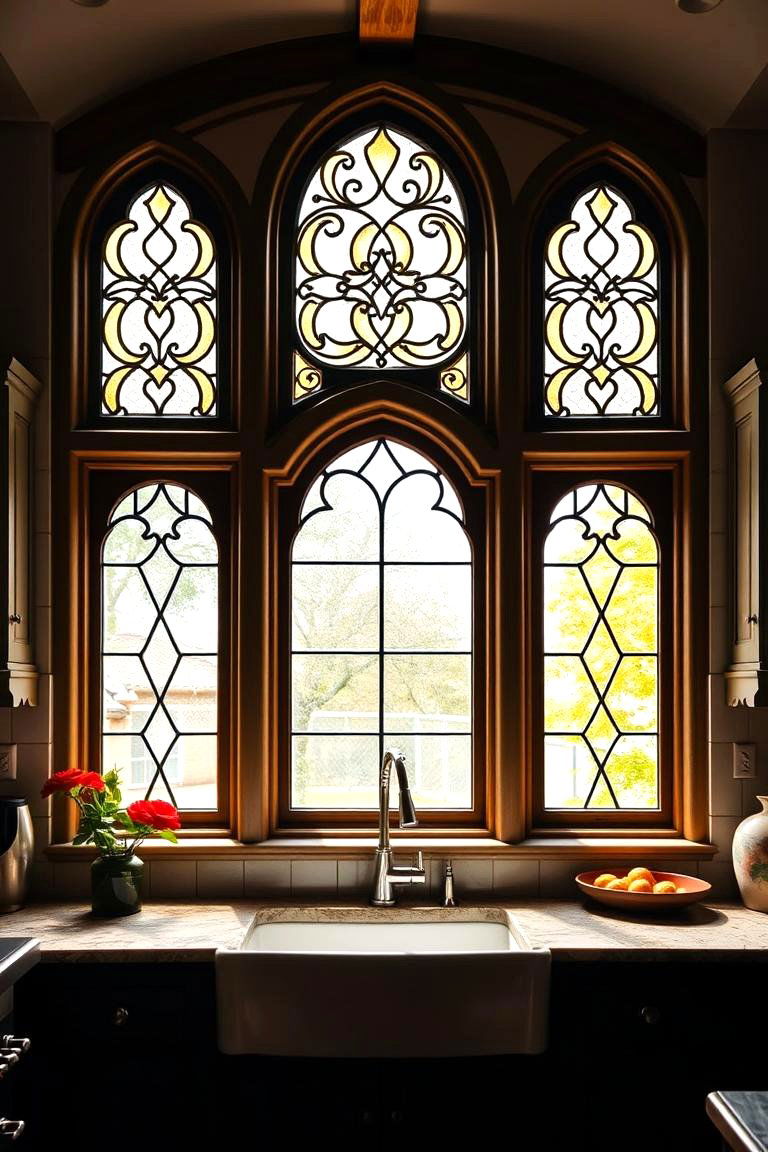
Leaded glass windows are another iconic feature of the Tudor style, adding an air of historical grandeur. Their intricate patterns, often in geometric or floral designs, lend a sense of sophistication and depth to your kitchen. Consider installing leaded glass windows above a sink or on cabinet doors, where natural light can filter through, creating a warm, inviting glow that’s perfect for cooking and entertaining.
8. Invest in a Vintage-Style Range
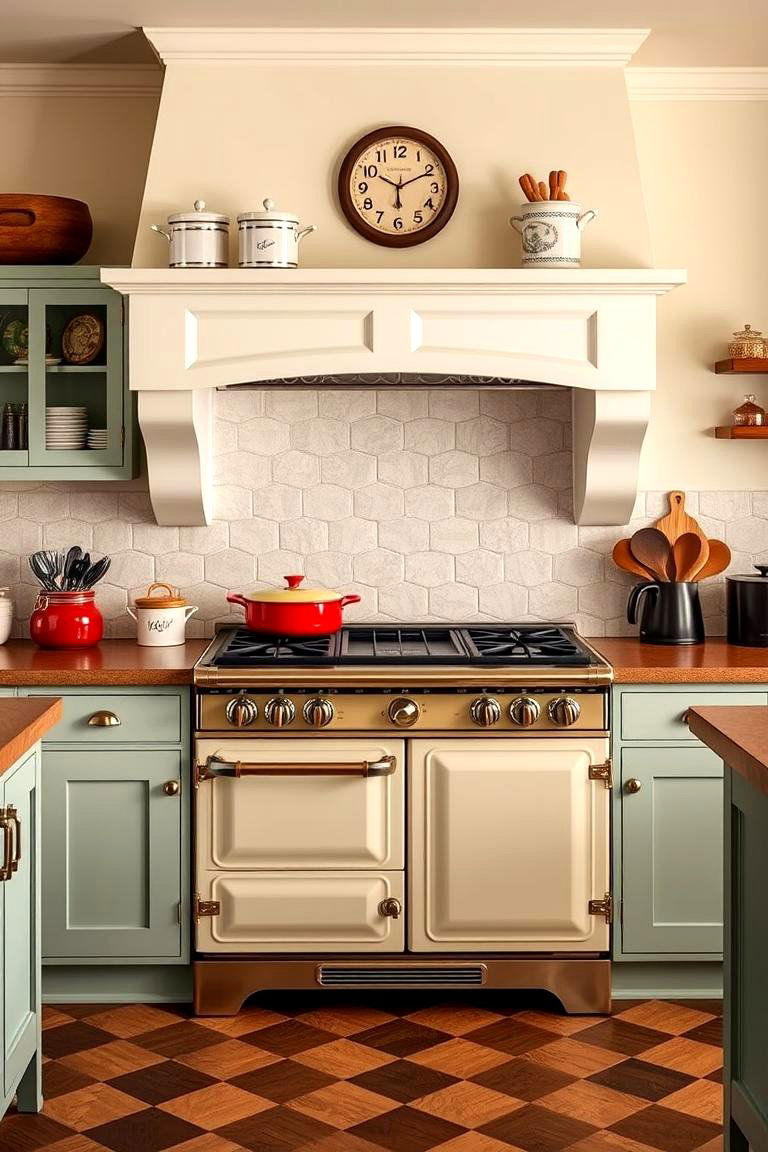
A vintage-style range, with its bold design and heavy-duty features, is a fitting tribute to Tudor kitchens of old. Whether you choose a classic AGA cooker or a more modern, retro-inspired model, a vintage range brings both functionality and nostalgia into the kitchen. These appliances are not only visually striking but also built for durability, making them perfect for high-volume cooking in a Tudor-inspired space.
9. Incorporate Dark Wood Floors

Dark wood floors, such as oak or walnut, perfectly complement the rich tones of Tudor cabinetry and beams. They bring warmth and depth to the room while maintaining the rustic elegance of Tudor design. The dark hues create a cozy atmosphere, while the grain patterns of the wood add texture and visual interest to the space. For a timeless look, choose a matte finish to preserve the natural feel of the wood.
10. Utilize Open Shelving for Display
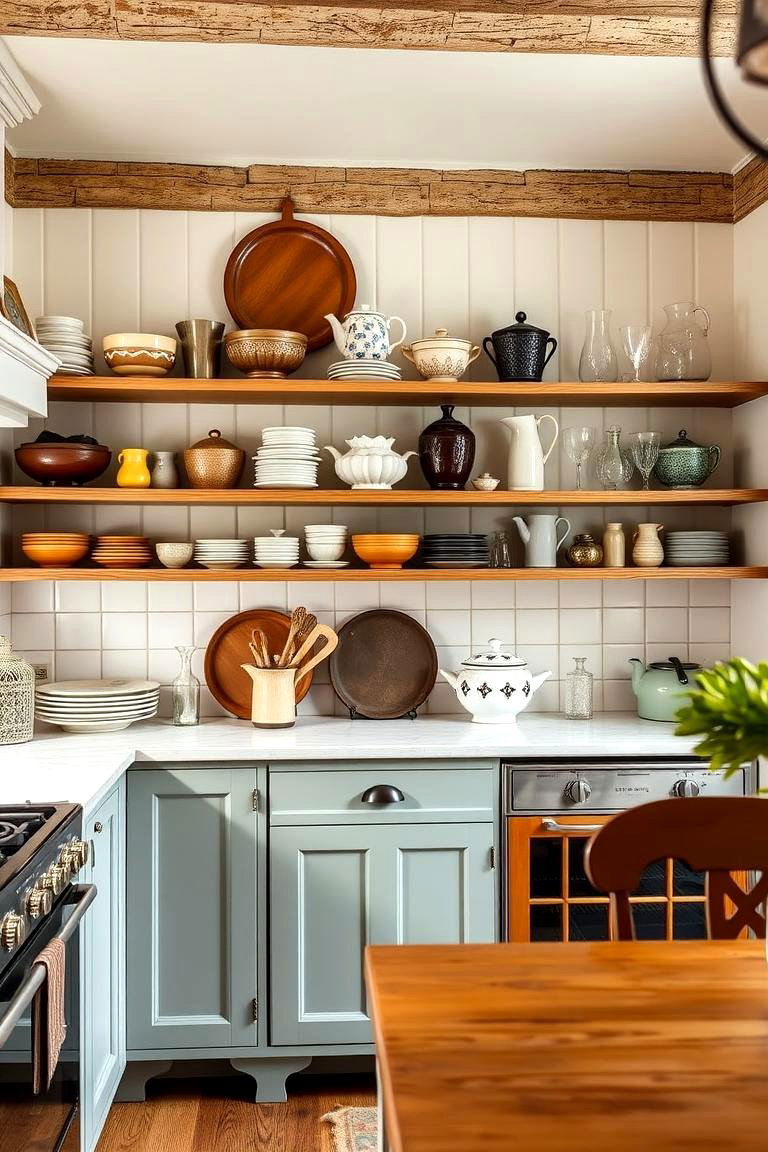
Incorporate open shelving into your Tudor kitchen to showcase your favorite dishes or vintage kitchenware. Open shelving works well with the traditional look by allowing you to display items such as pottery, glassware, or antique pieces, which bring personality and charm to the space. Just be mindful of keeping shelves organized, as clutter can detract from the warm, inviting vibe of a Tudor kitchen.
11. Feature a Large, Central Island
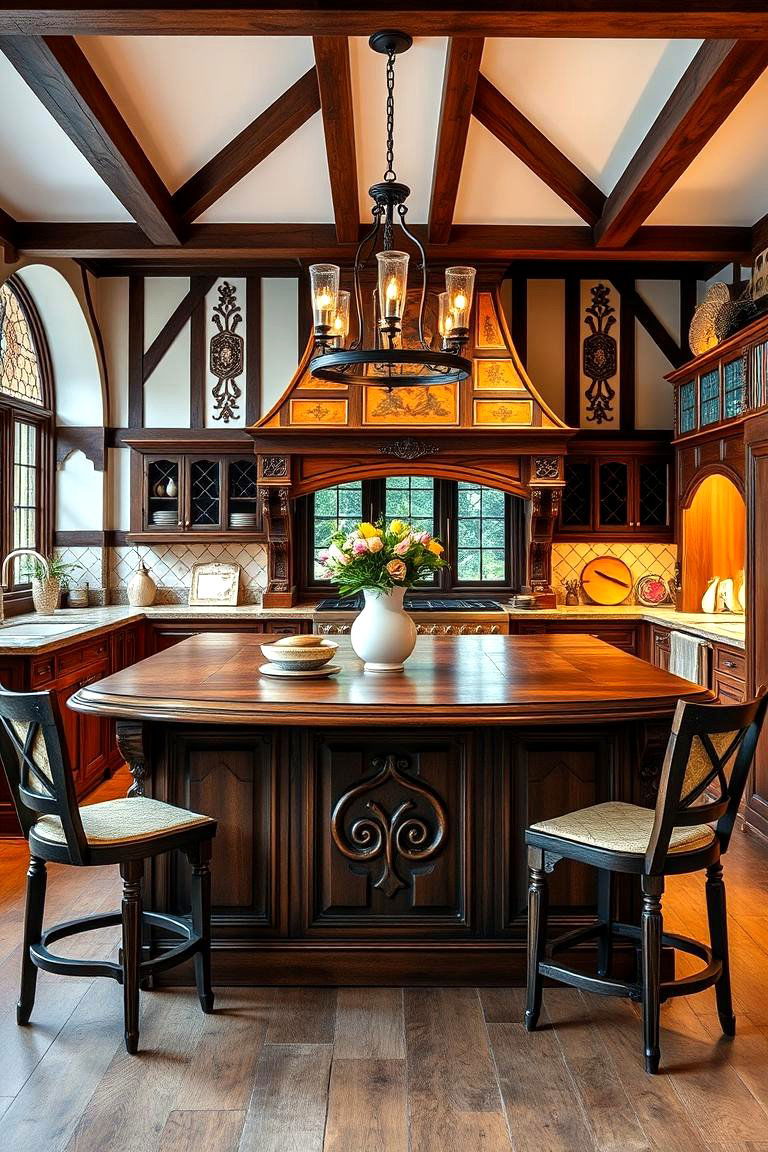
A central island is an essential feature in a Tudor kitchen, offering both functionality and a gathering space for family and guests. Choose an island with traditional materials such as wood, granite, or marble, and consider incorporating intricate detailing or carvings to enhance its historical appeal. A large island serves as the heart of the kitchen, making meal prep easier while creating a cozy spot for conversations.
12. Use Warm, Earthy Color Schemes
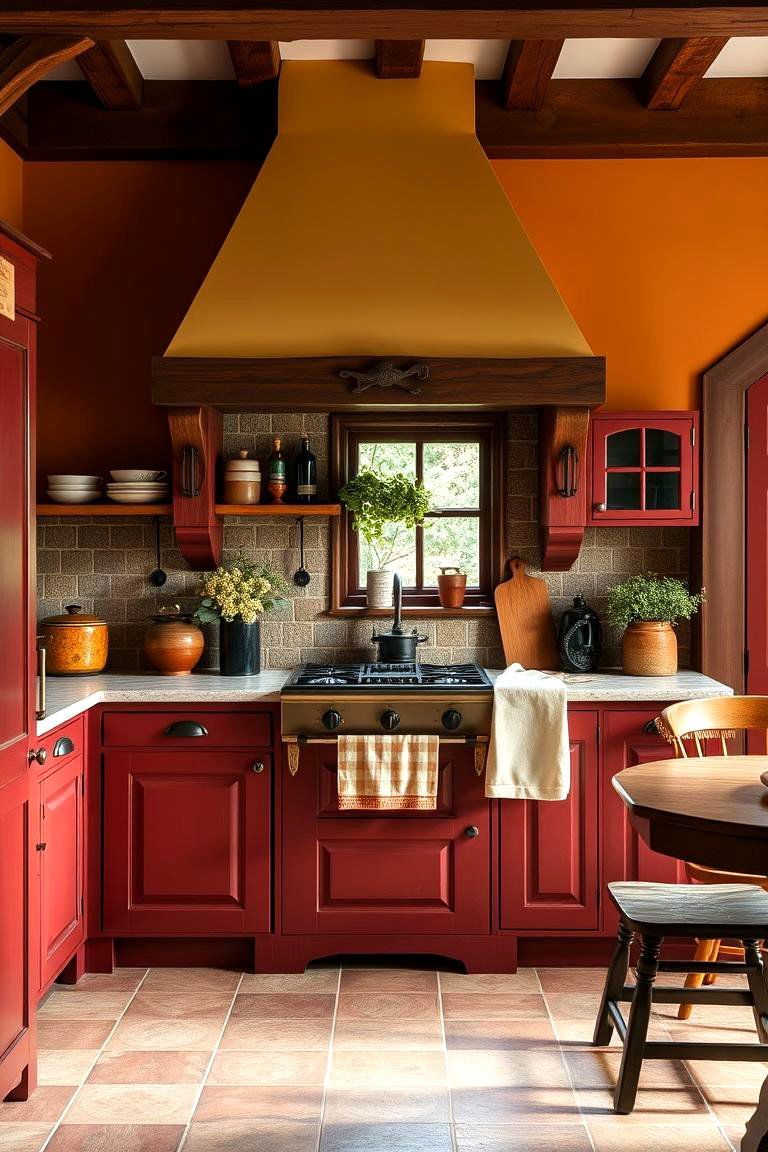
Warm, earthy color schemes are a hallmark of Tudor kitchens, with shades of deep red, olive green, mustard yellow, and muted browns helping to create a cozy, inviting atmosphere. These colors, combined with natural materials like wood and stone, evoke the feeling of an English cottage or country manor. Incorporate these hues through wall paint, cabinetry, and accessories to infuse the kitchen with traditional Tudor charm.
13. Introduce Brick or Stone Accent Walls
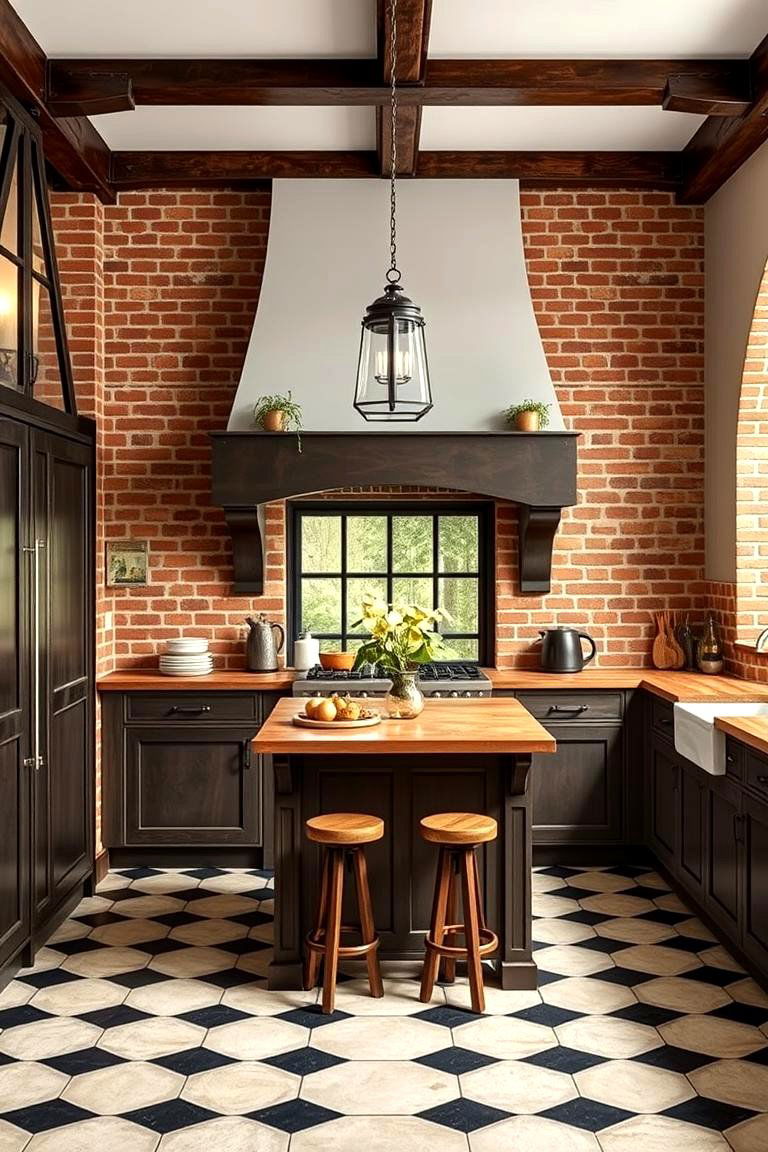
Brick or stone accent walls add an unmistakable touch of authenticity to your Tudor kitchen. Whether you choose a full wall of exposed brick or a small stone backsplash, these materials can break up the visual monotony of wood and add an element of texture. The rustic charm of brick and stone ties back to the historical influence of the Tudor style, giving your kitchen a lived-in, timeless quality.
14. Hang a Large, Ornate Chandelier
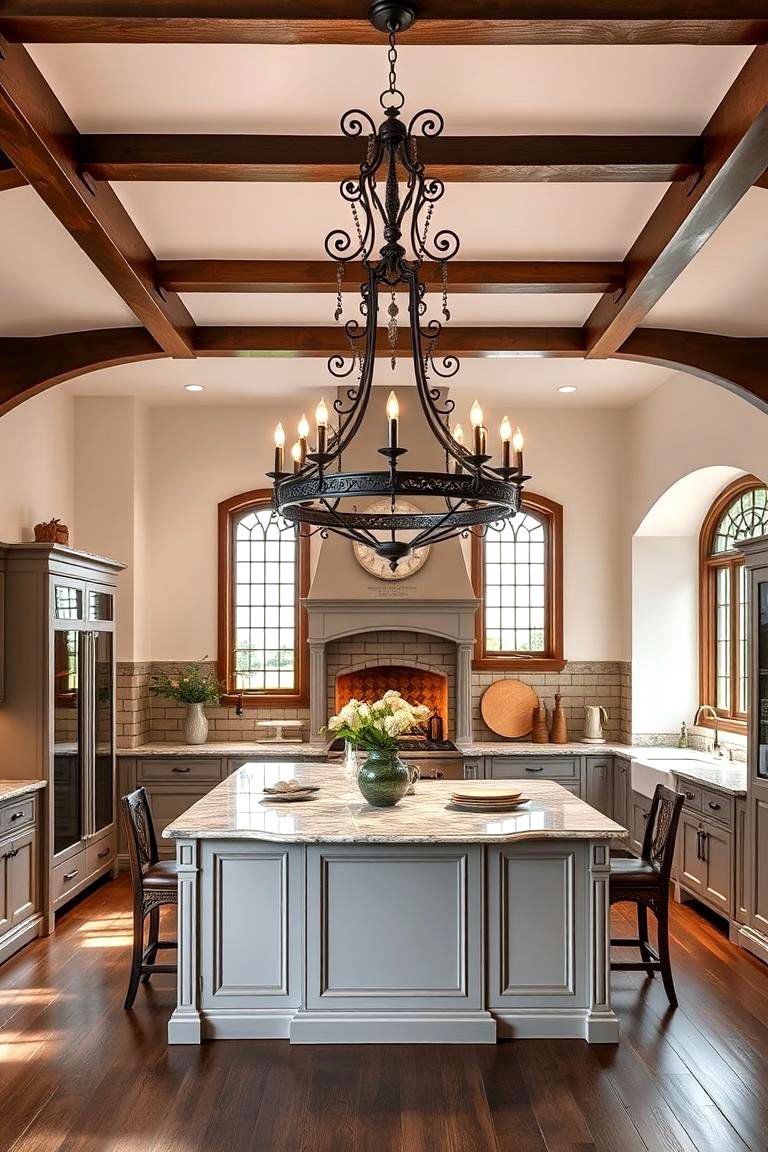
An ornate chandelier brings elegance and drama to your Tudor kitchen, reflecting the grandeur often associated with this design style. Look for vintage-style chandeliers with intricate ironwork or crystal accents, which can be placed above the kitchen island or dining area. The right lighting fixture can not only enhance the ambiance but also act as a statement piece that complements the room’s traditional elements.
15. Add a Touch of Ironwork

Ironwork is an iconic feature in Tudor kitchens, often used in everything from door handles to decorative accents. Adding wrought iron elements—whether in cabinet hardware, railings, or even a custom range hood—can help infuse your kitchen with that distinct medieval charm. These details, though small, make a big impact, enriching the overall design with texture and timeless beauty.
16. Integrate a Large Farmhouse Sink
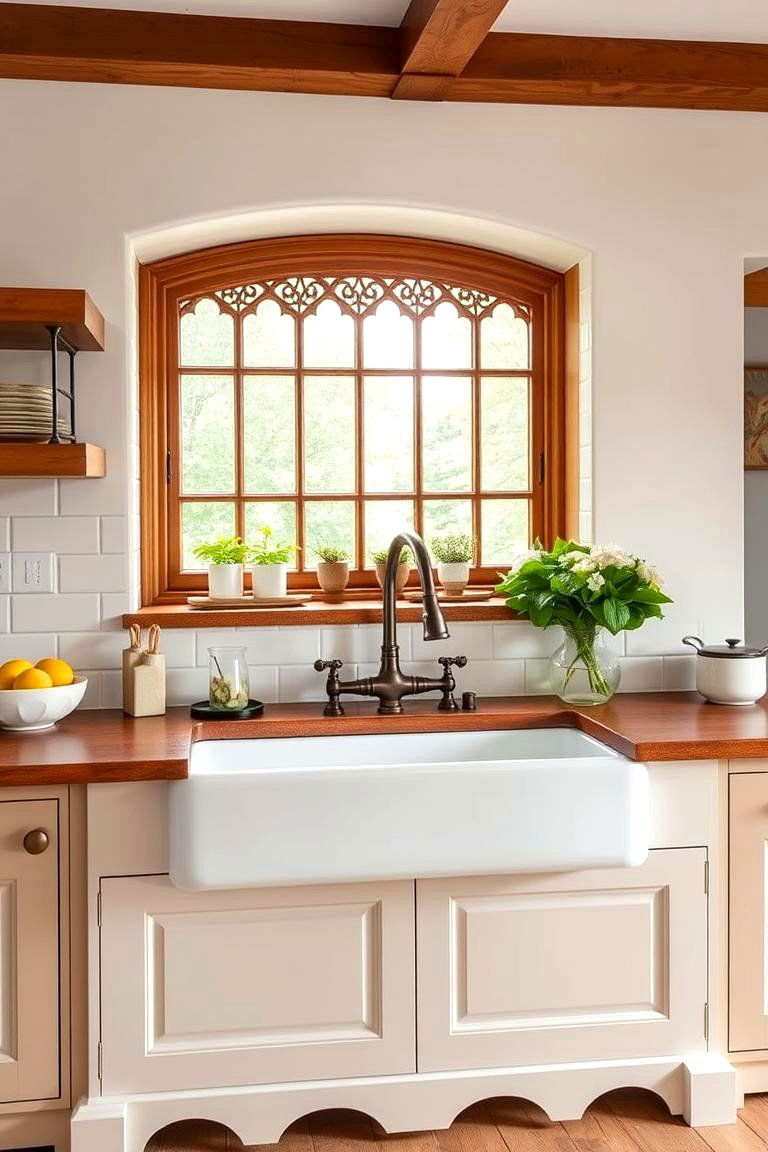
A large farmhouse sink is a quintessential feature of a Tudor-style kitchen, offering both practicality and aesthetic appeal. These sinks, often made from durable materials like porcelain or cast iron, provide ample space for washing dishes and preparing food. Their deep basins and wide fronts add a rustic, vintage touch while also being incredibly functional for daily tasks.
17. Feature Wooden Countertops
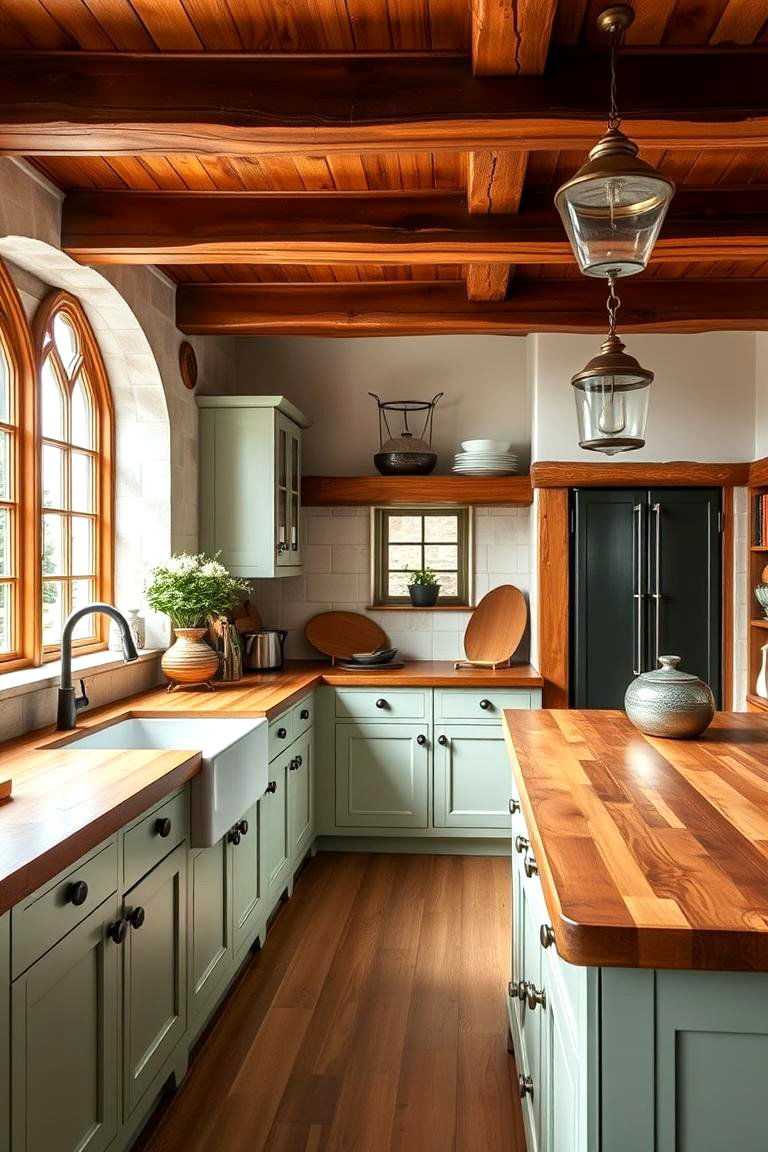
Wooden countertops are a perfect addition to a Tudor kitchen, evoking a sense of warmth and rustic elegance. Materials like butcher block or reclaimed wood not only add visual appeal but also offer a practical, durable work surface. Pairing wooden countertops with stone or stainless steel accents can create a balance between old-world charm and modern functionality.
18. Install a Stone Fireplace
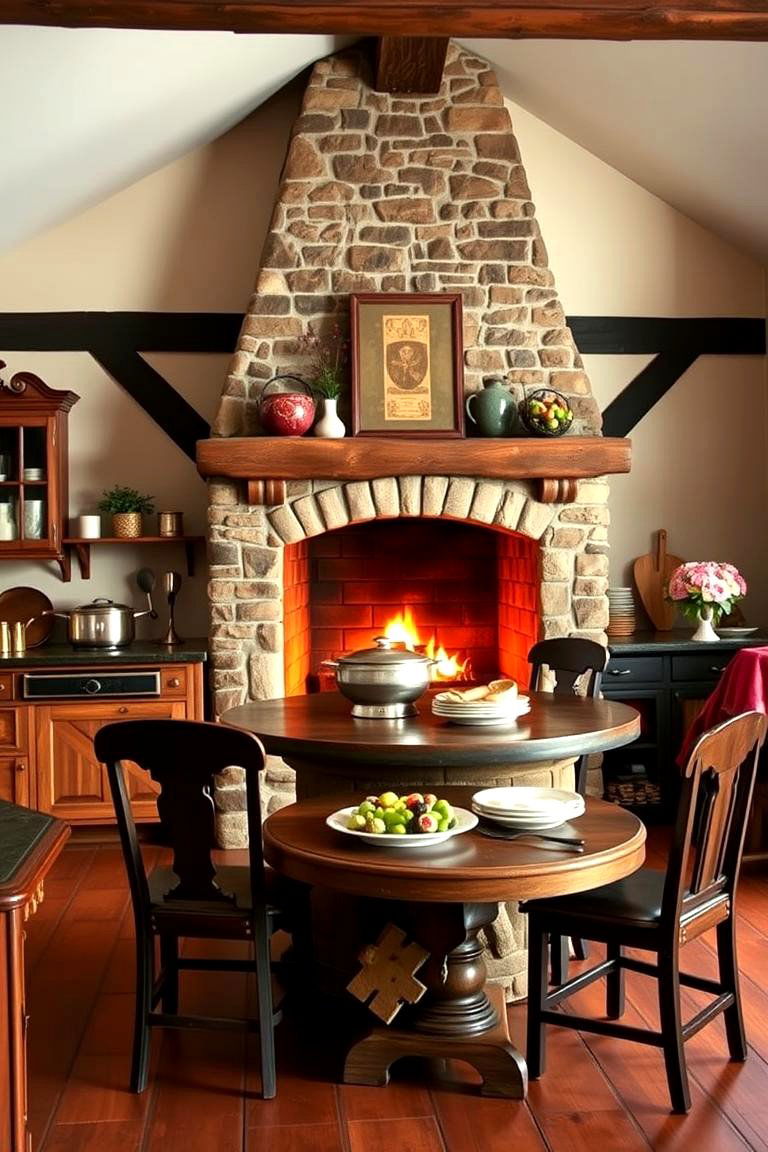
A stone fireplace is a central feature in many Tudor kitchens, providing both warmth and visual interest. It can act as a focal point in the room, creating a cozy atmosphere ideal for cooking or entertaining. Whether used purely for aesthetic appeal or as a functional feature, a stone fireplace can help bring the rustic elegance of the Tudor style into your home.
19. Use Decorative Wall Paneling
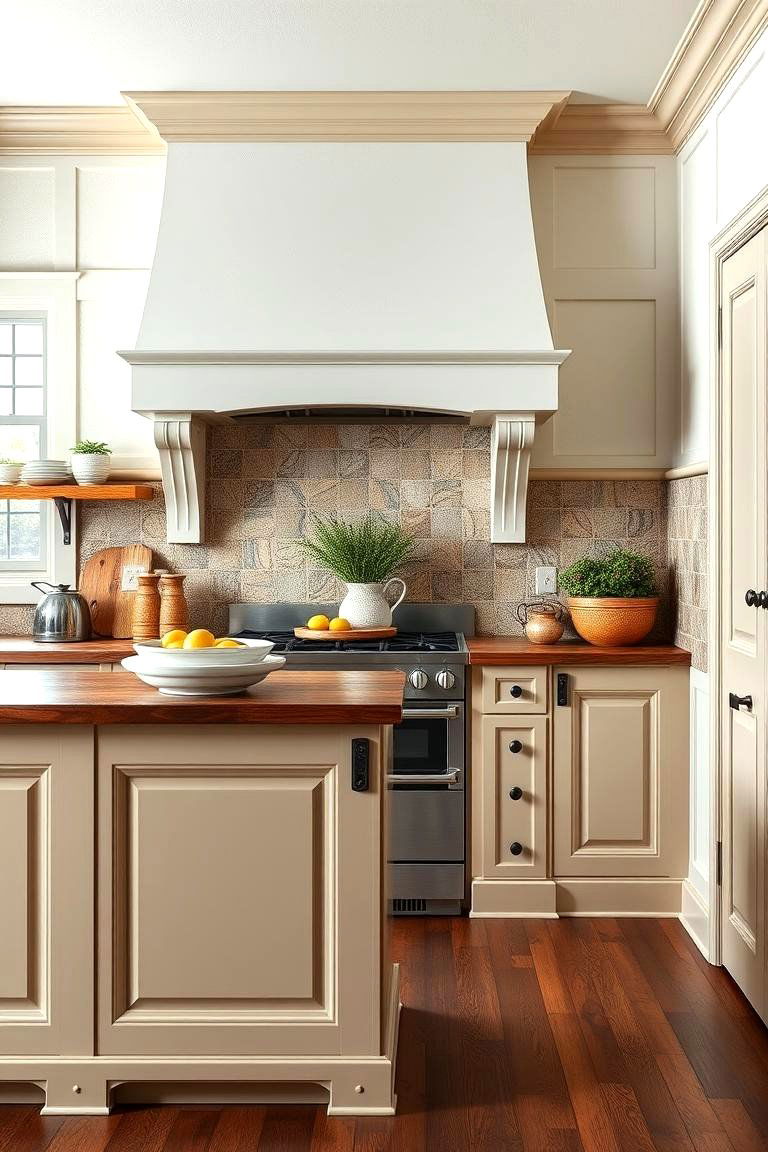
Decorative wall paneling, such as wainscoting or beadboard, adds a layer of texture and sophistication to your Tudor kitchen. These paneling options create visual interest while maintaining the timeless feel of the design. Whether you use paneling on the lower half of the walls or cover the entire room, it’s an elegant way to incorporate traditional elements into your kitchen.
20. Add a Touch of Luxurious Upholstery
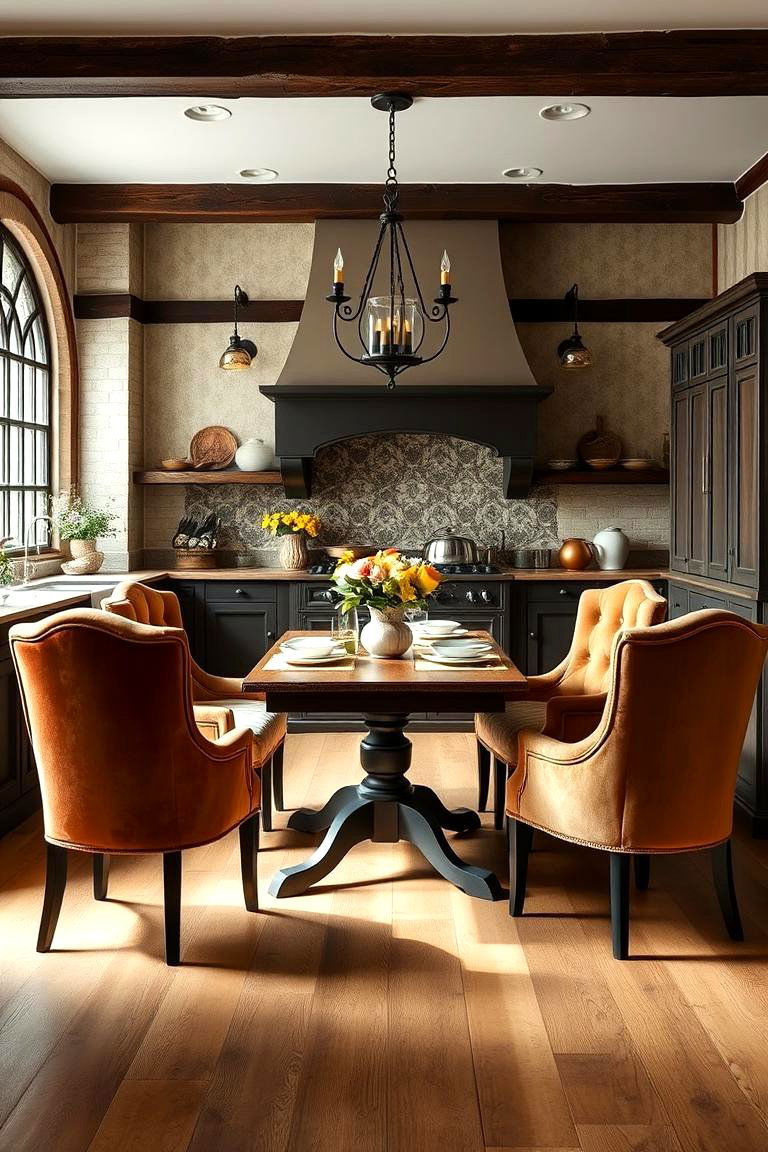
In a Tudor kitchen, luxurious upholstery can enhance the rustic charm with a touch of softness. Think of plush, upholstered chairs or banquette seating in the dining area. Soft, rich fabrics like velvet or leather add texture and contrast to the hard materials typical of Tudor design, creating an inviting space for family meals and gatherings.
21. Incorporate Rustic Wooden Shelving
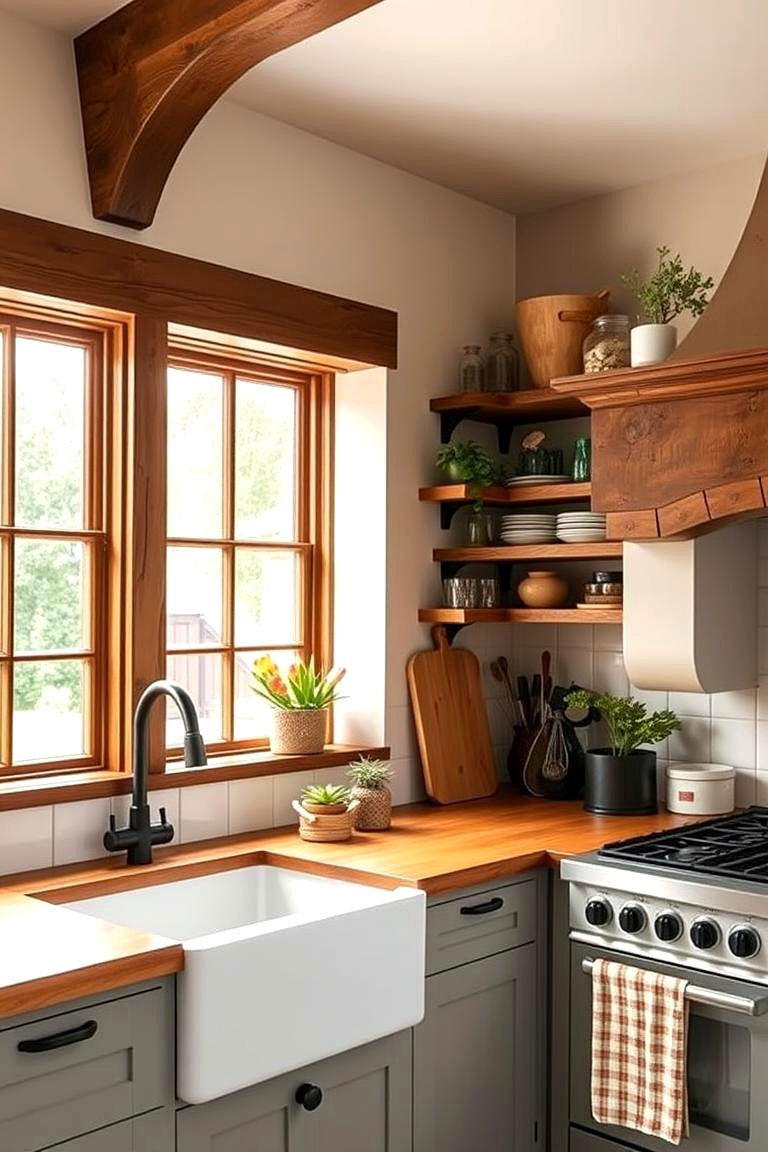
Rustic wooden shelving adds a charming, functional aspect to your Tudor kitchen. These shelves, made from reclaimed wood or distressed materials, provide storage and display space while contributing to the cozy, earthy feel. Use them to store kitchen essentials or display your favorite cookware and decor, creating an inviting and personalized space.
22. Choose Stone or Wooden Range Hoods
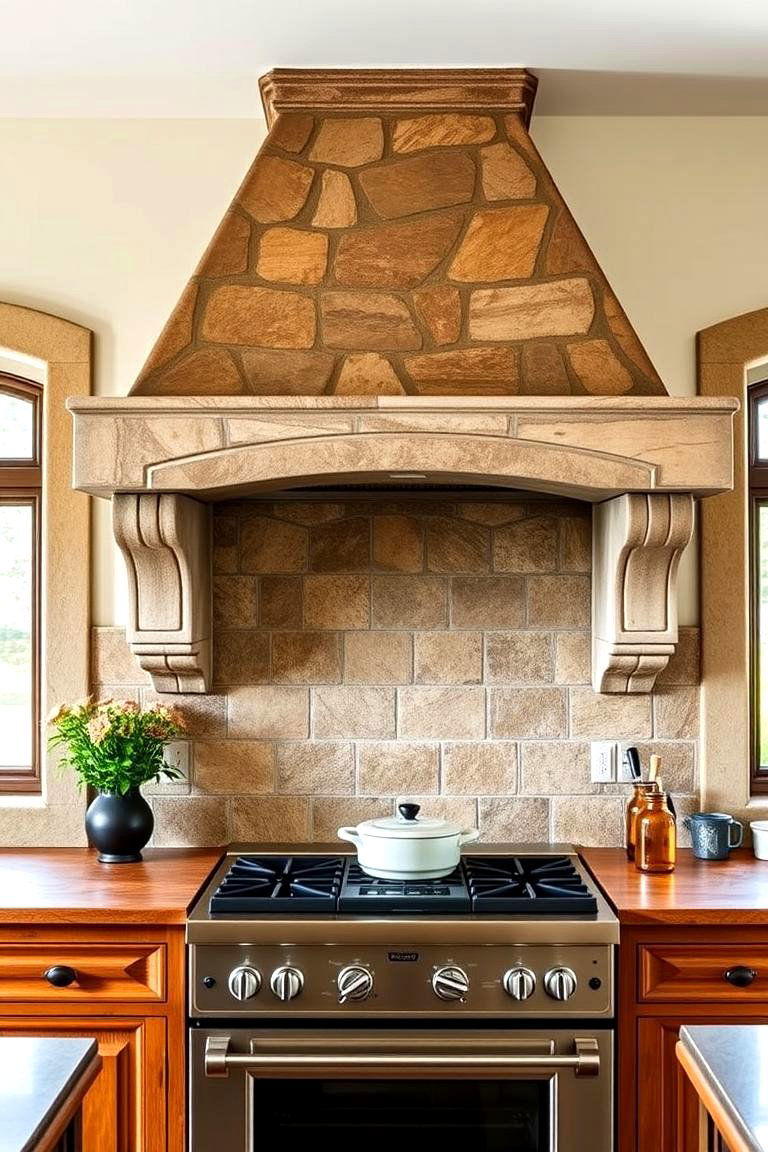
A range hood crafted from stone or wood is a perfect way to make a bold statement in your Tudor kitchen. These hoods, often intricately designed, provide a focal point above your stove or cooking area. Whether you choose a rustic wooden range hood or a smooth stone design, it serves as a functional and striking element that enhances the Tudor aesthetic.
23. Install a Wine Cooler
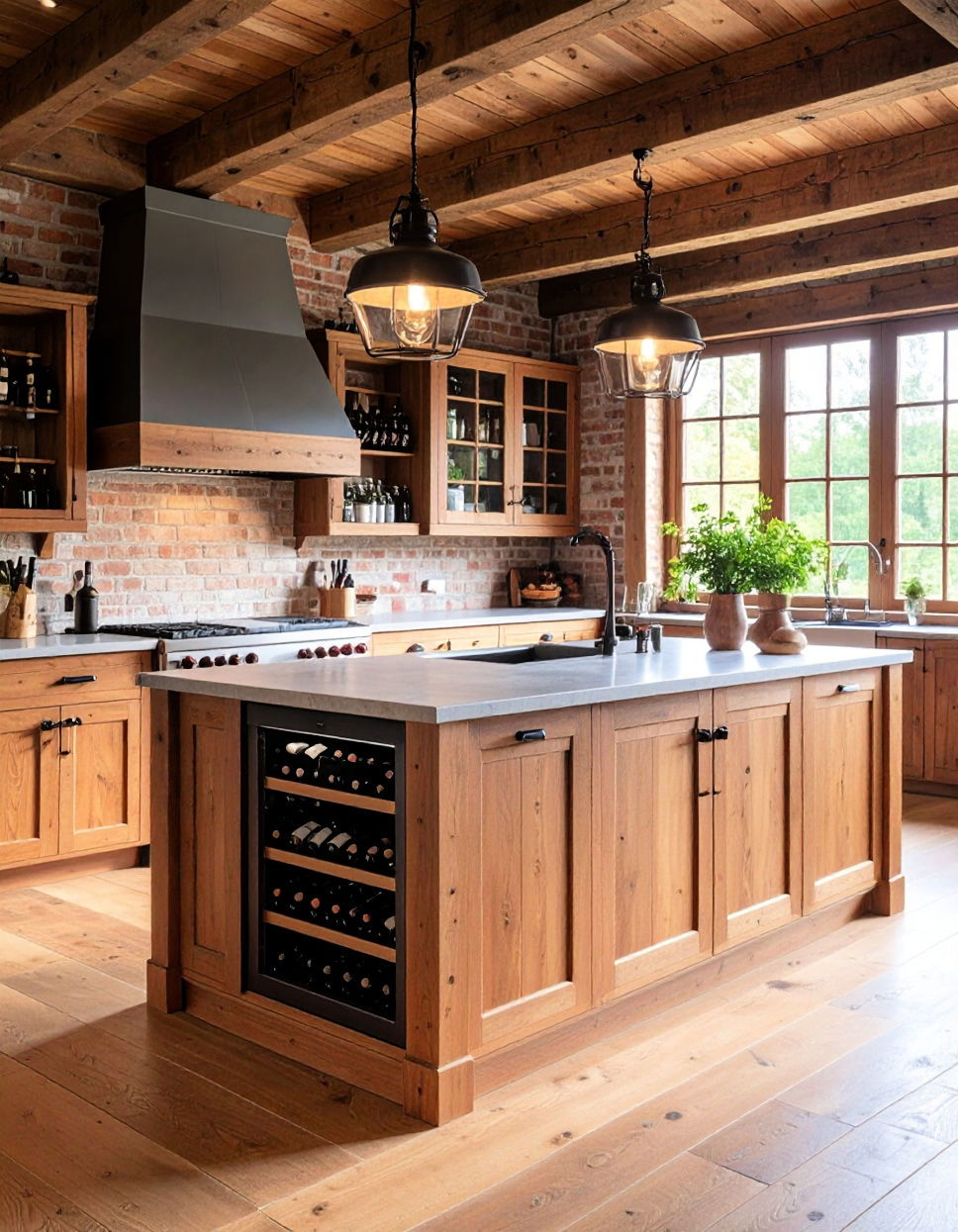
Adding a wine cooler to your Tudor kitchen not only serves a practical purpose but also aligns with the traditional grandeur of the style. A built-in wine cooler can be integrated into cabinetry or installed as a freestanding unit, offering a stylish way to store your wine collection. It’s the perfect way to elevate your kitchen’s luxury without sacrificing practicality.
24. Opt for a Simple, Classic Layout
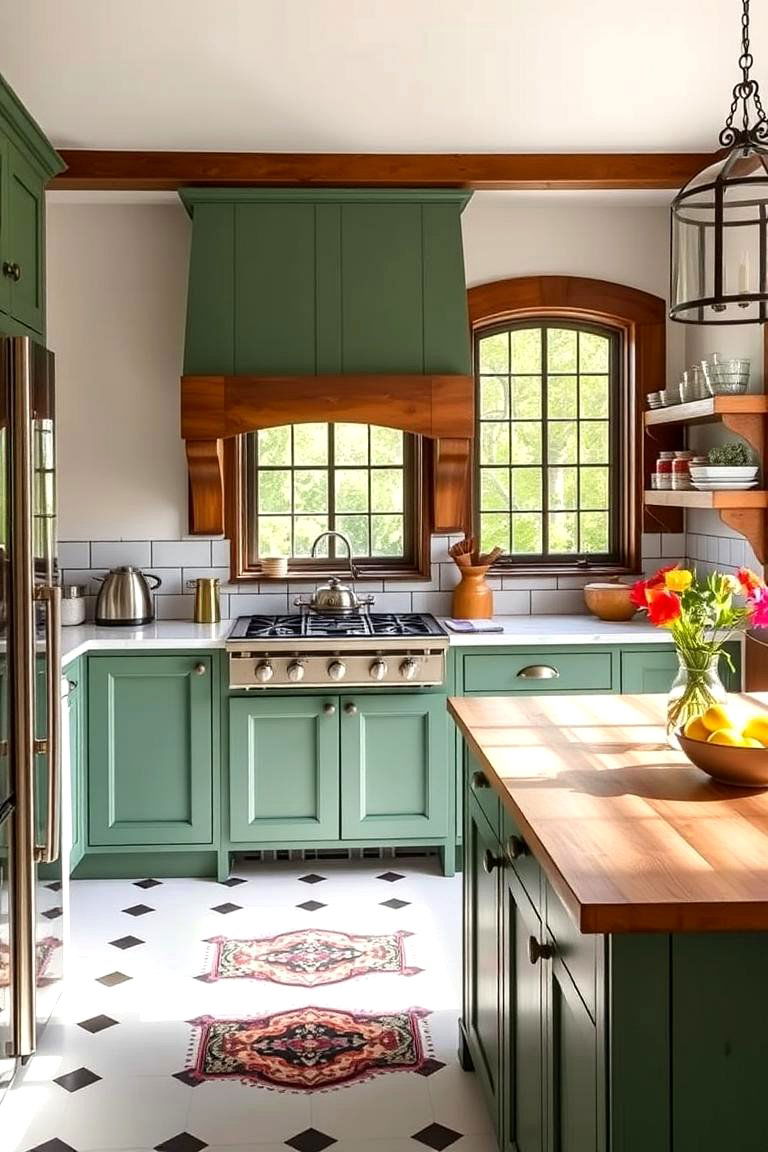
Tudor kitchens are often organized with a simple, functional layout that prioritizes usability. Instead of overly complicated designs, focus on creating a kitchen that’s easy to navigate, with ample counter space and a natural flow. This practical layout ensures the space remains functional while preserving the charm and coziness characteristic of Tudor homes.
25. Introduce Natural Light with Skylights
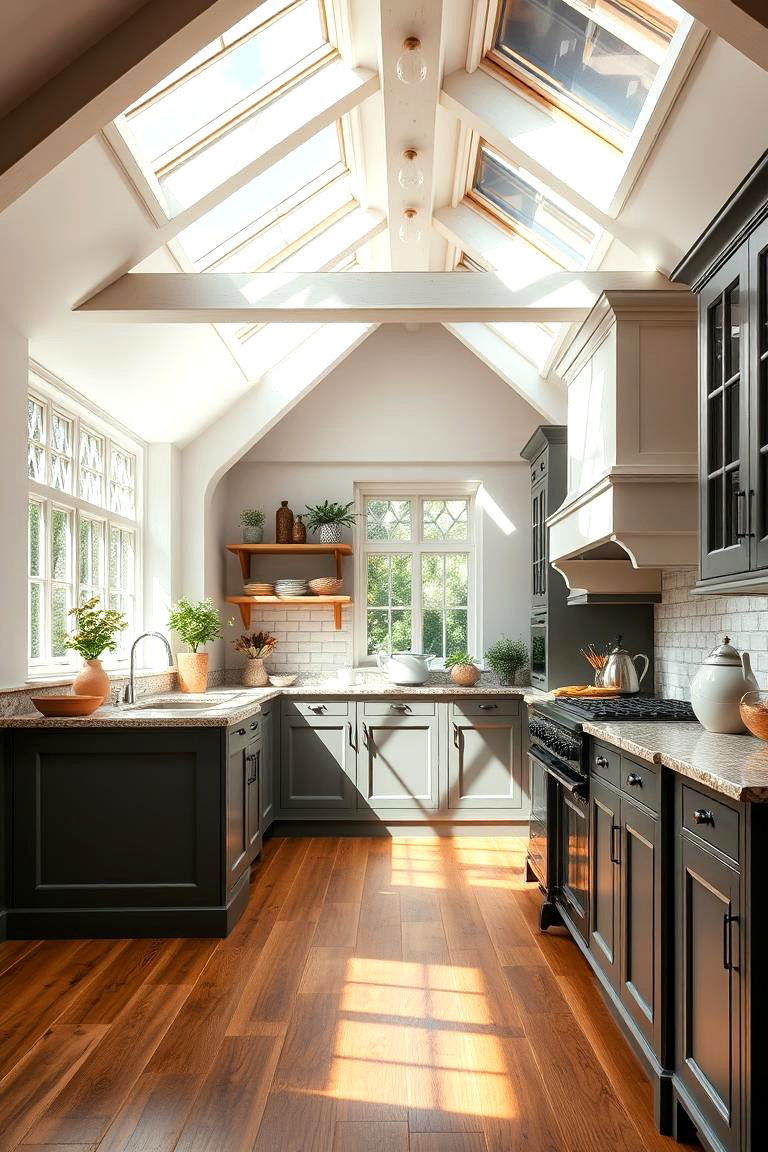
Introducing natural light into your Tudor kitchen can significantly enhance the space. Skylights are a fantastic option, allowing sunlight to flood the room, creating a bright and airy atmosphere. This addition not only makes the kitchen feel more expansive but also highlights the rich materials and textures used throughout the design, bringing the entire space to life.
Conclusion:
A Tudor kitchen seamlessly blends rustic charm and modern functionality, making it an ideal choice for those seeking a space that’s both timeless and practical. From exposed beams to vintage-inspired appliances, each design element contributes to the warmth and elegance characteristic of Tudor homes. By incorporating these ideas, you can create a kitchen that honors tradition while offering the comfort and convenience of today’s living. Embrace the beauty and practicality of Tudor design to create a kitchen that will stand the test of time.


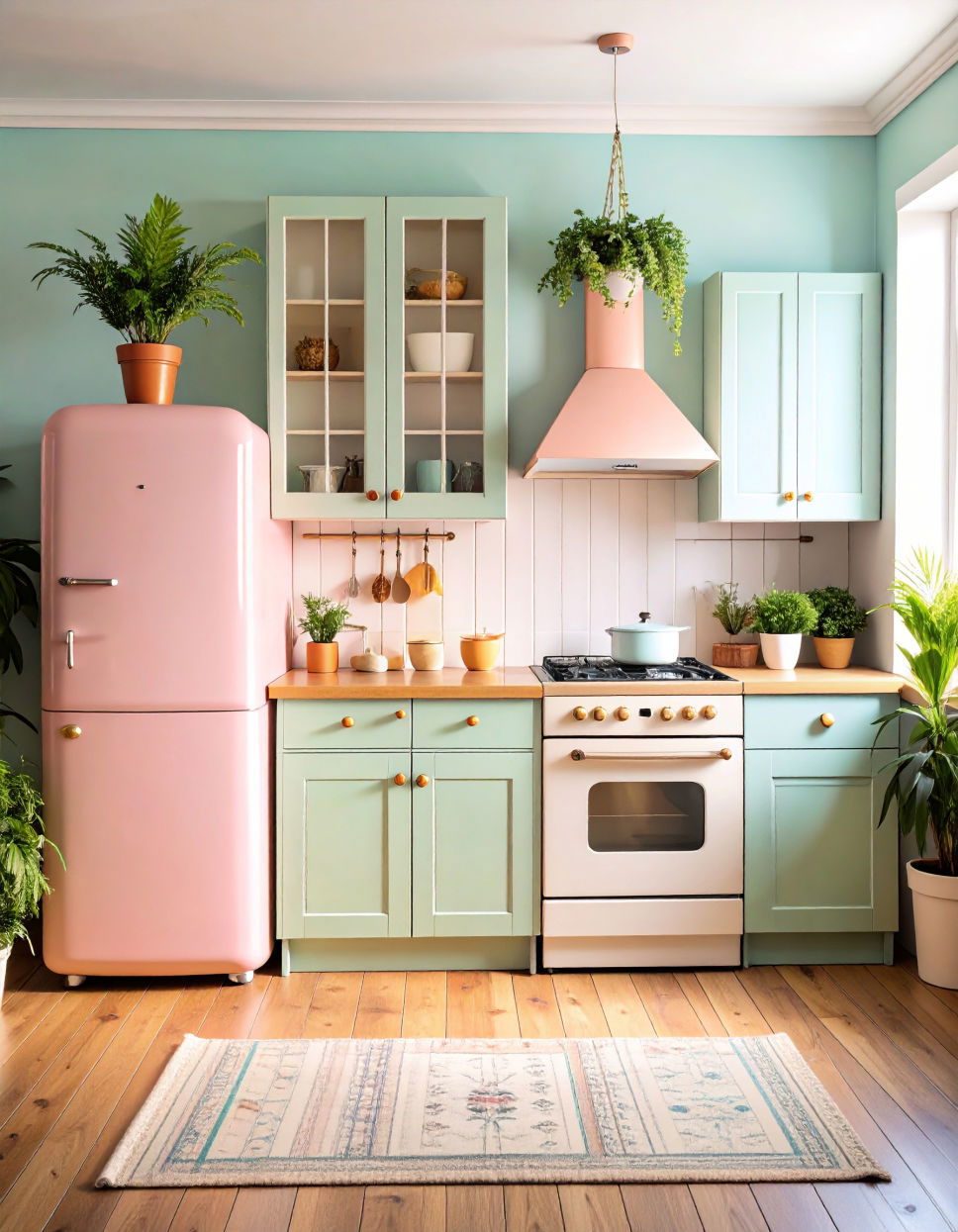
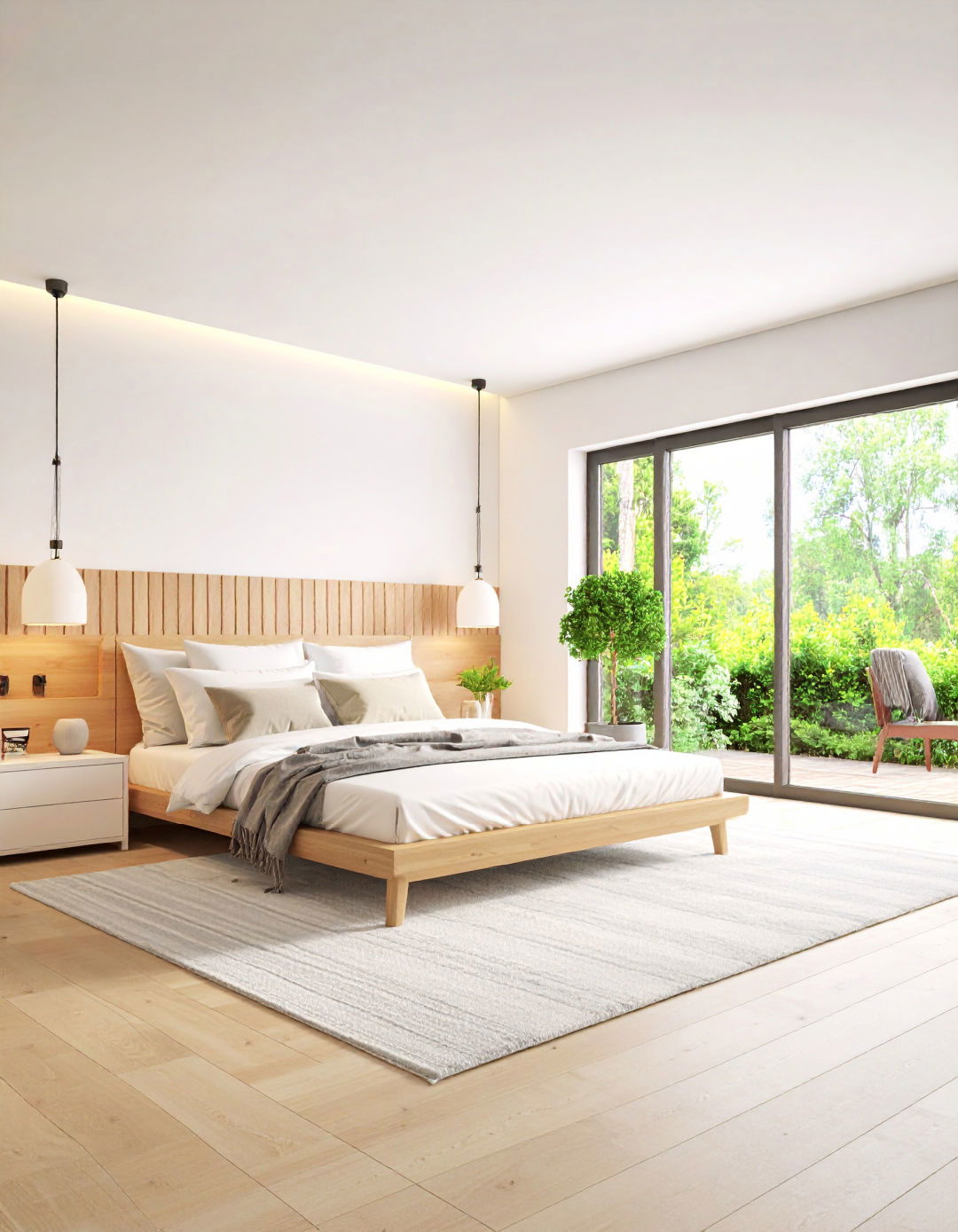
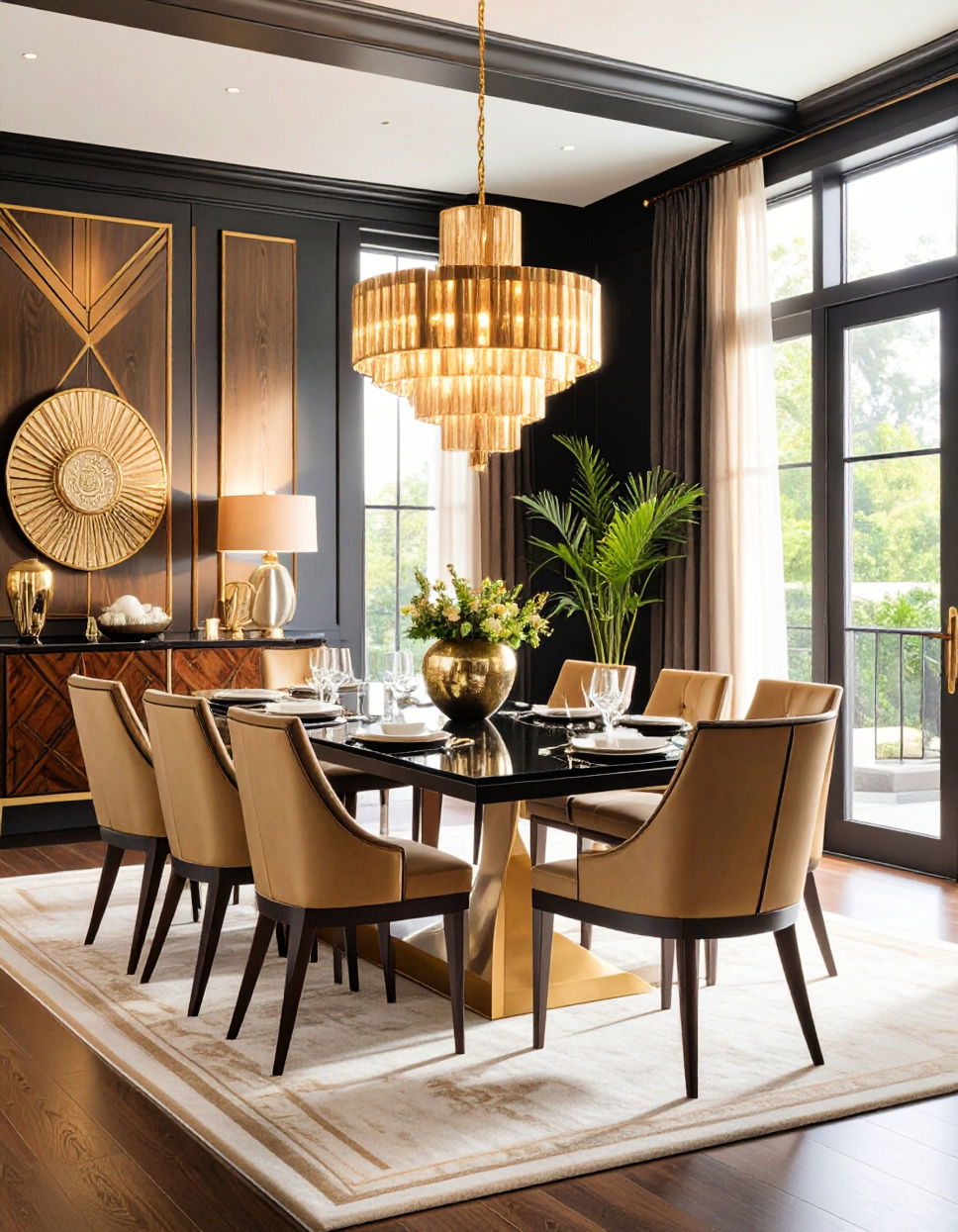
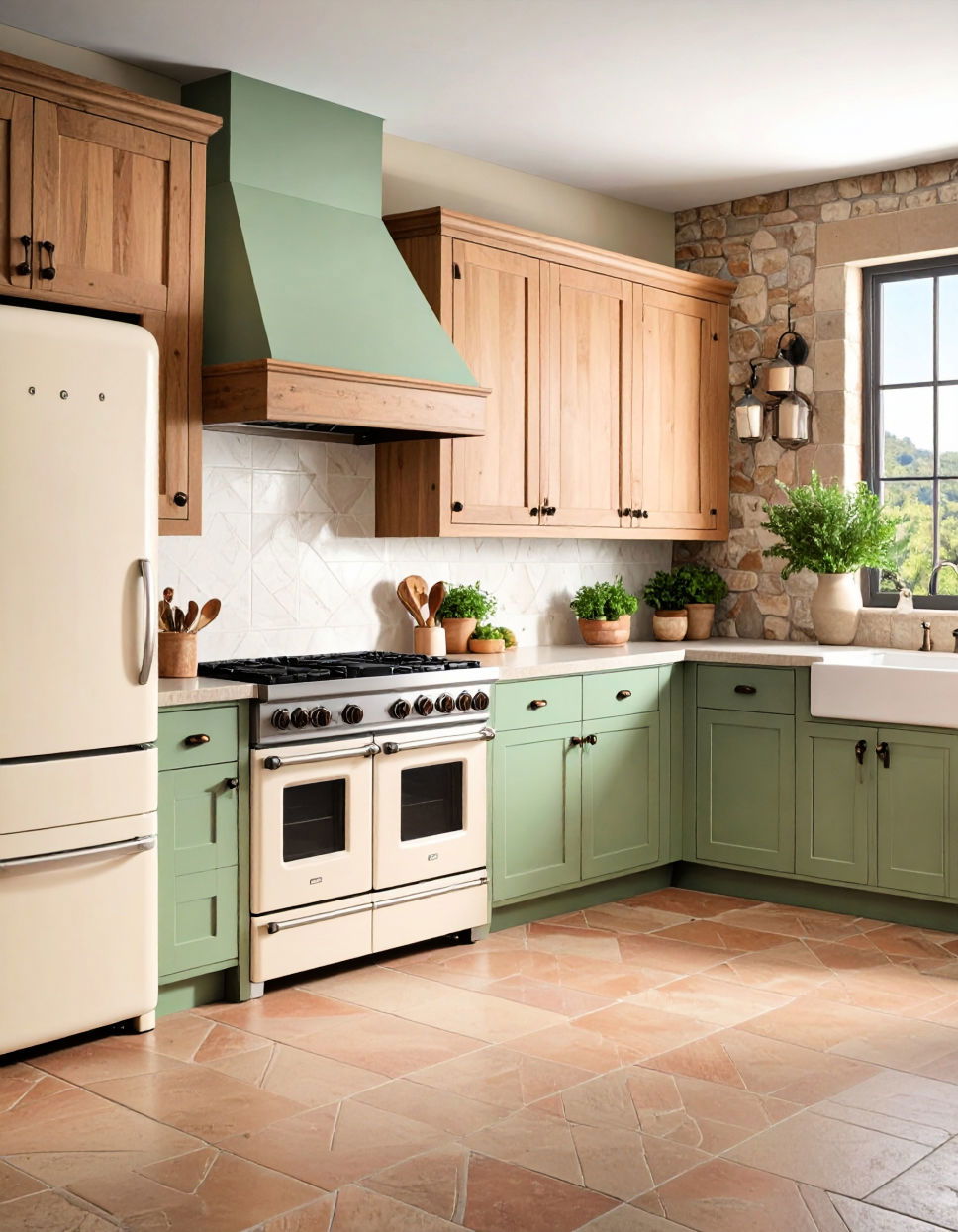

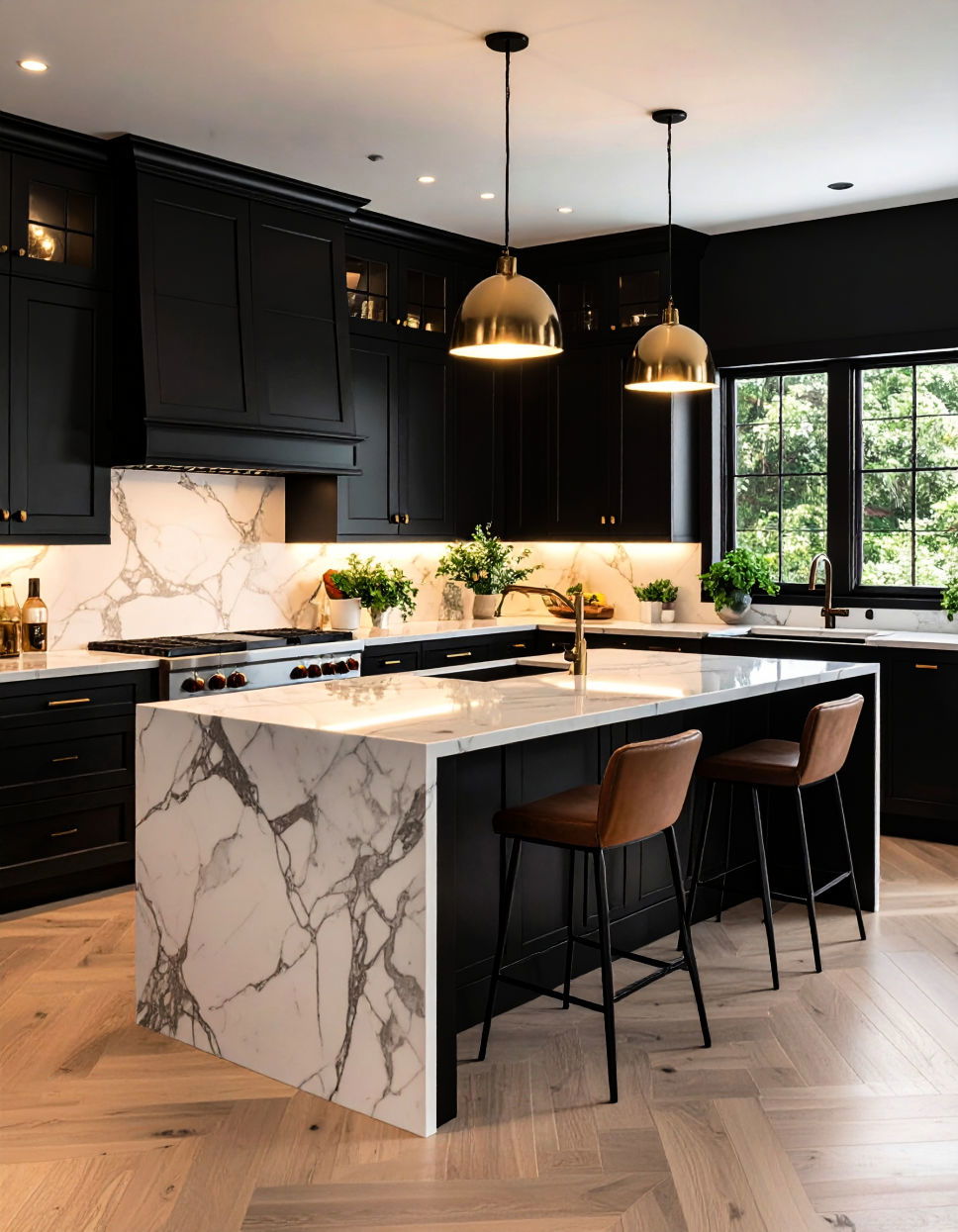
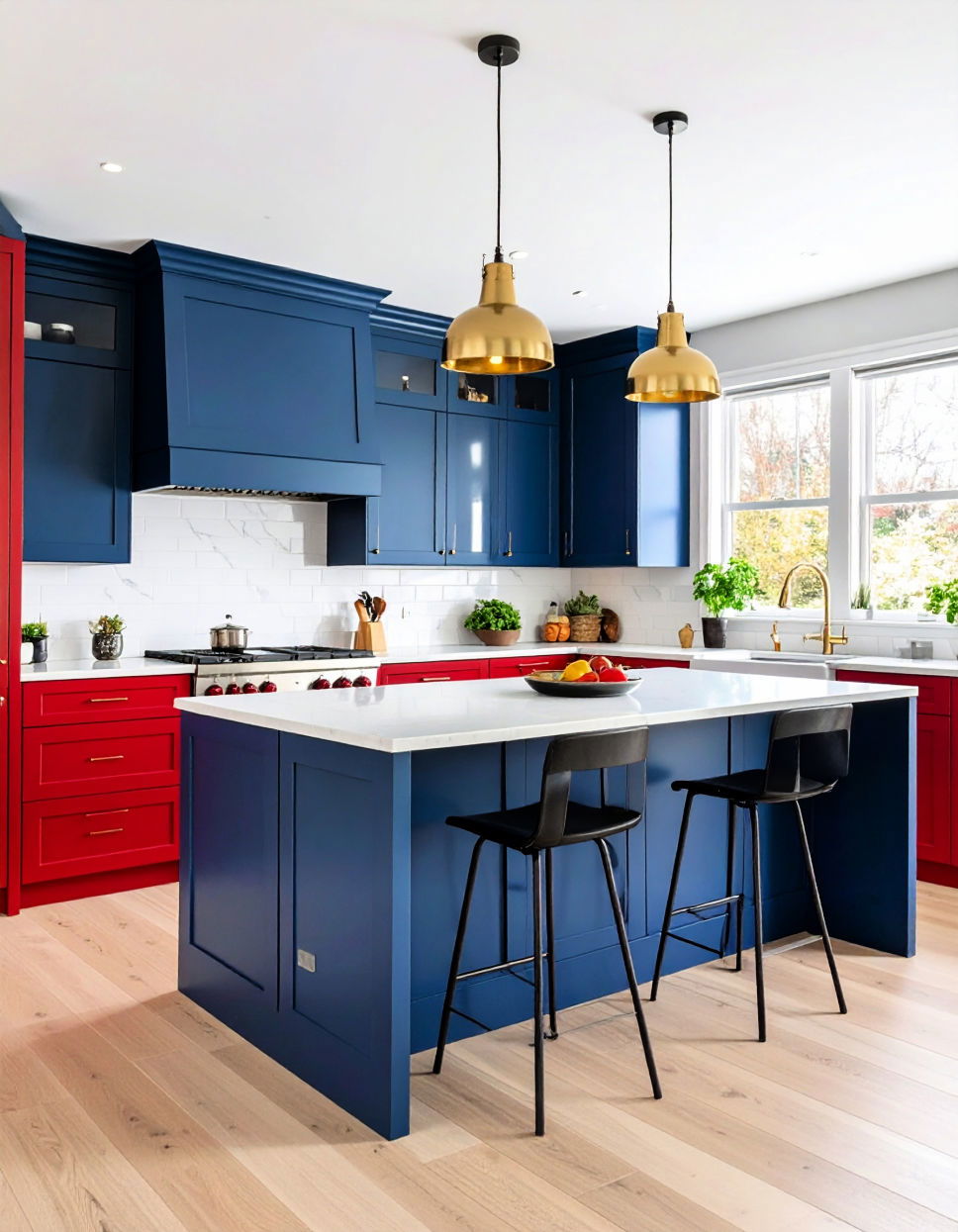
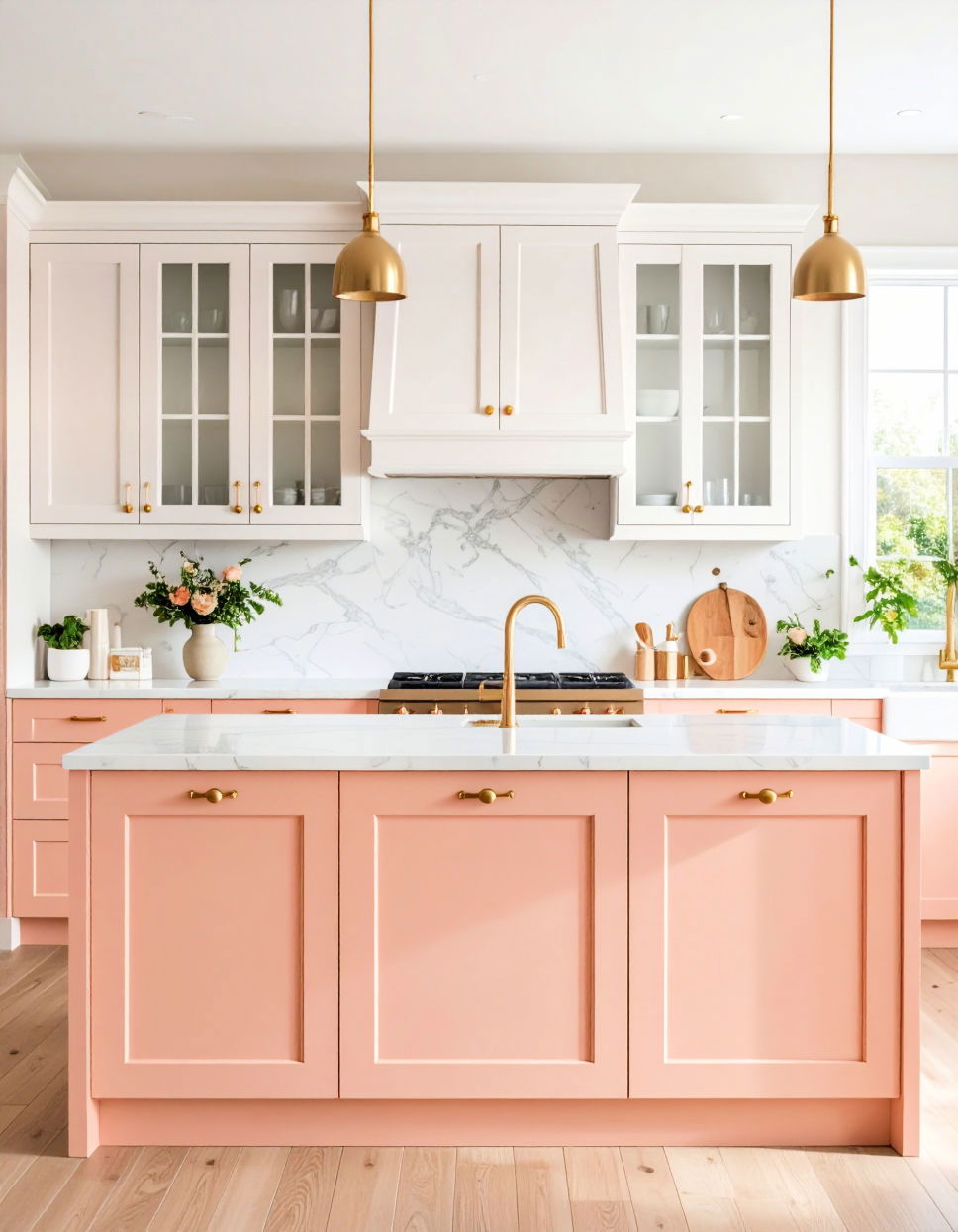

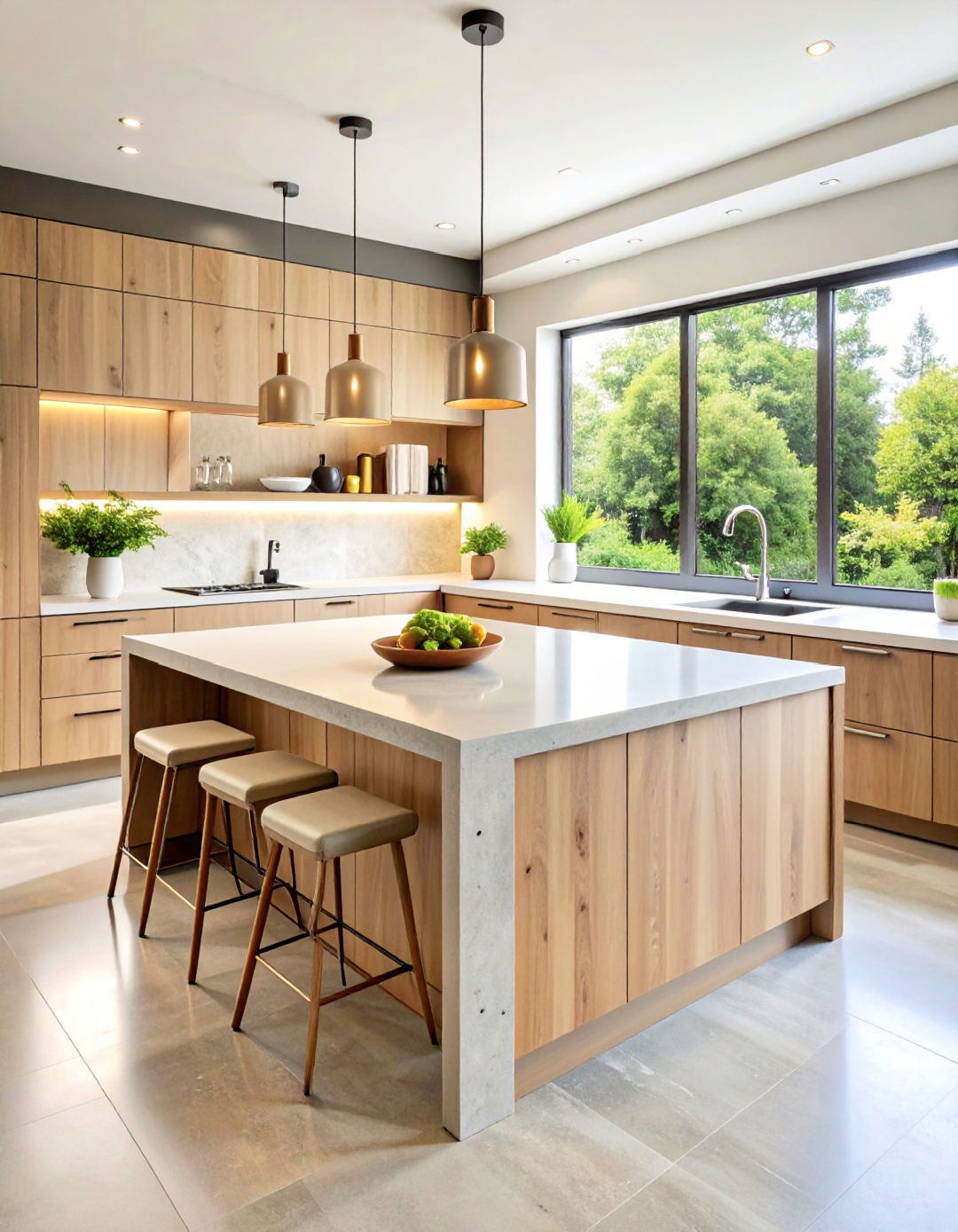
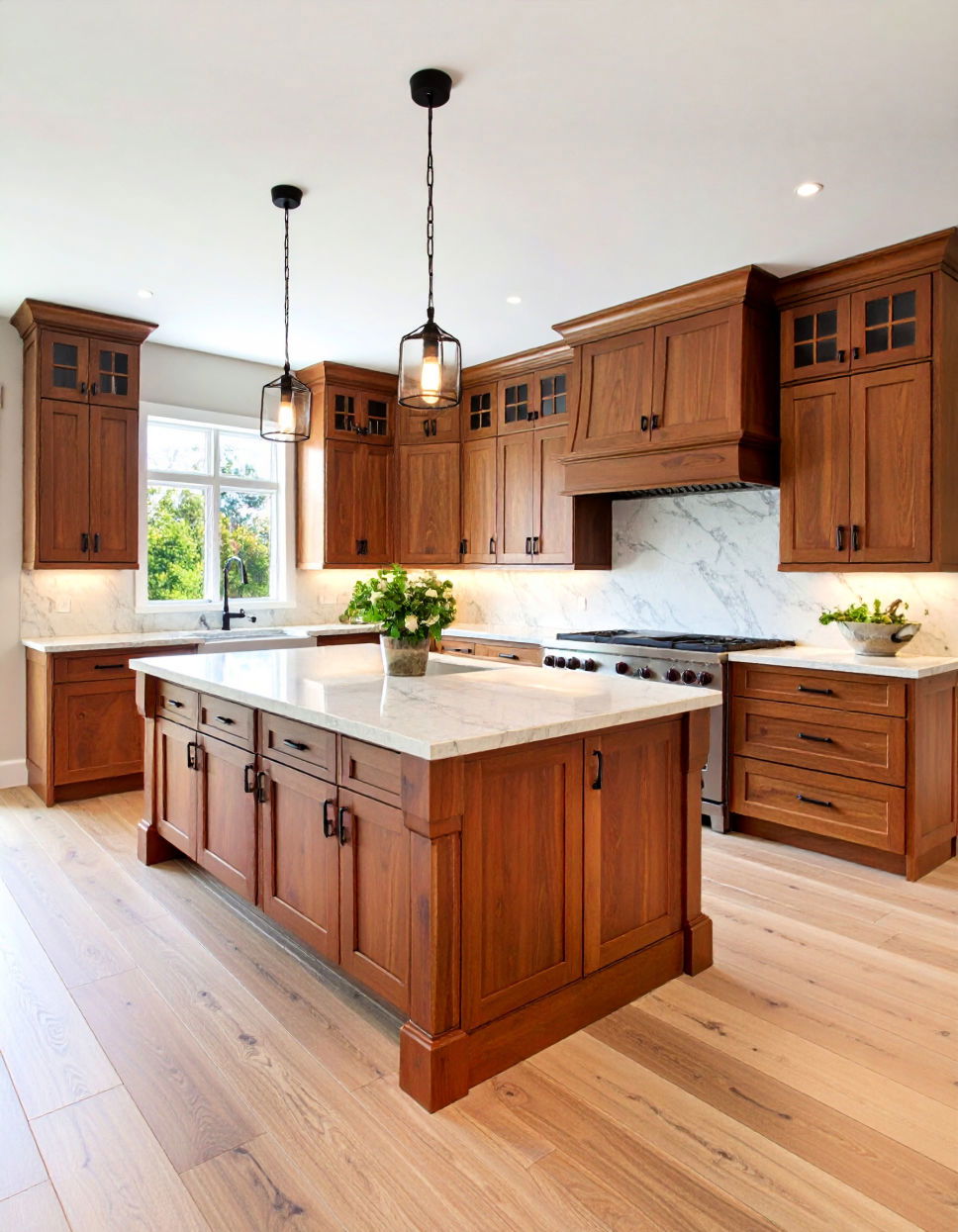
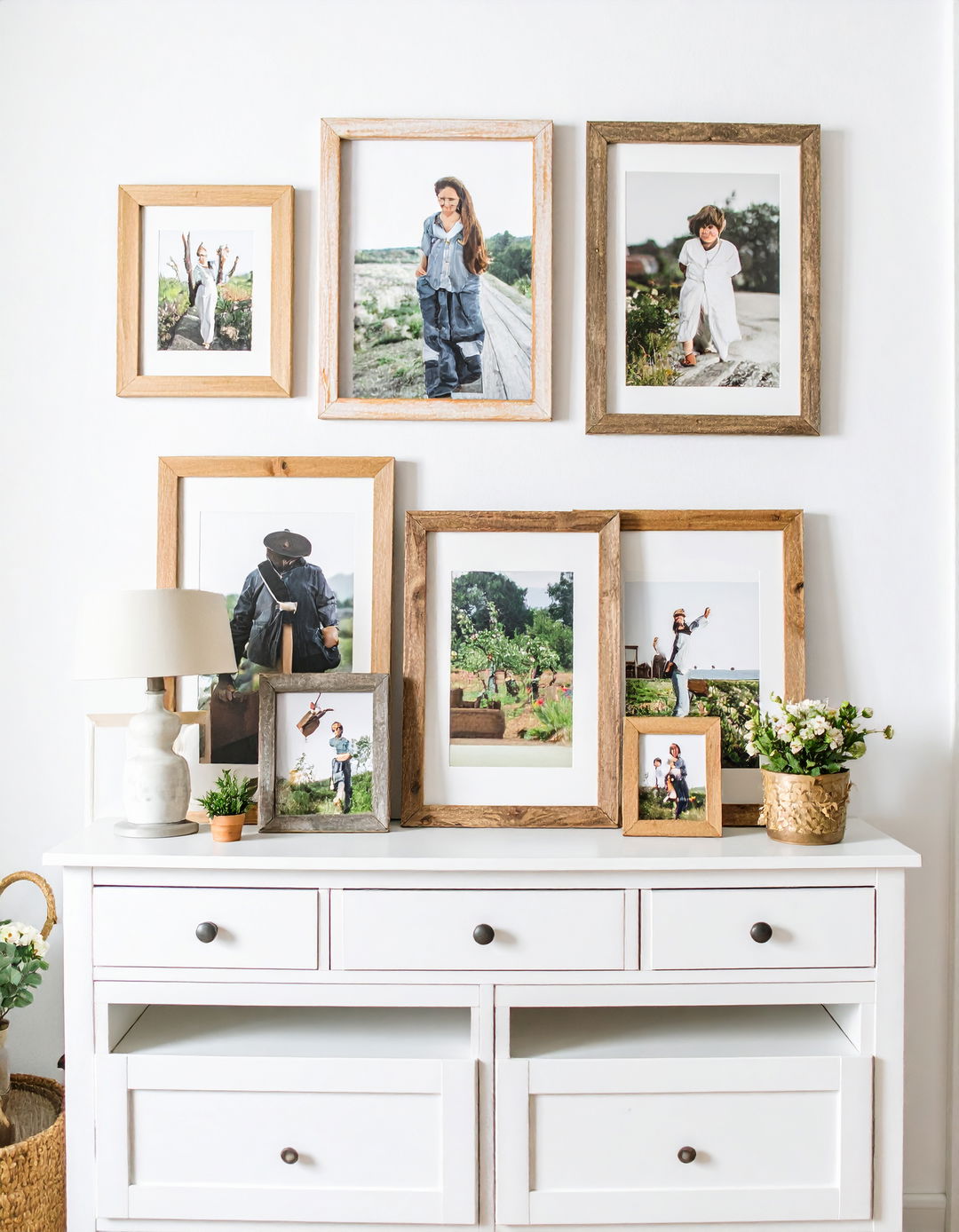
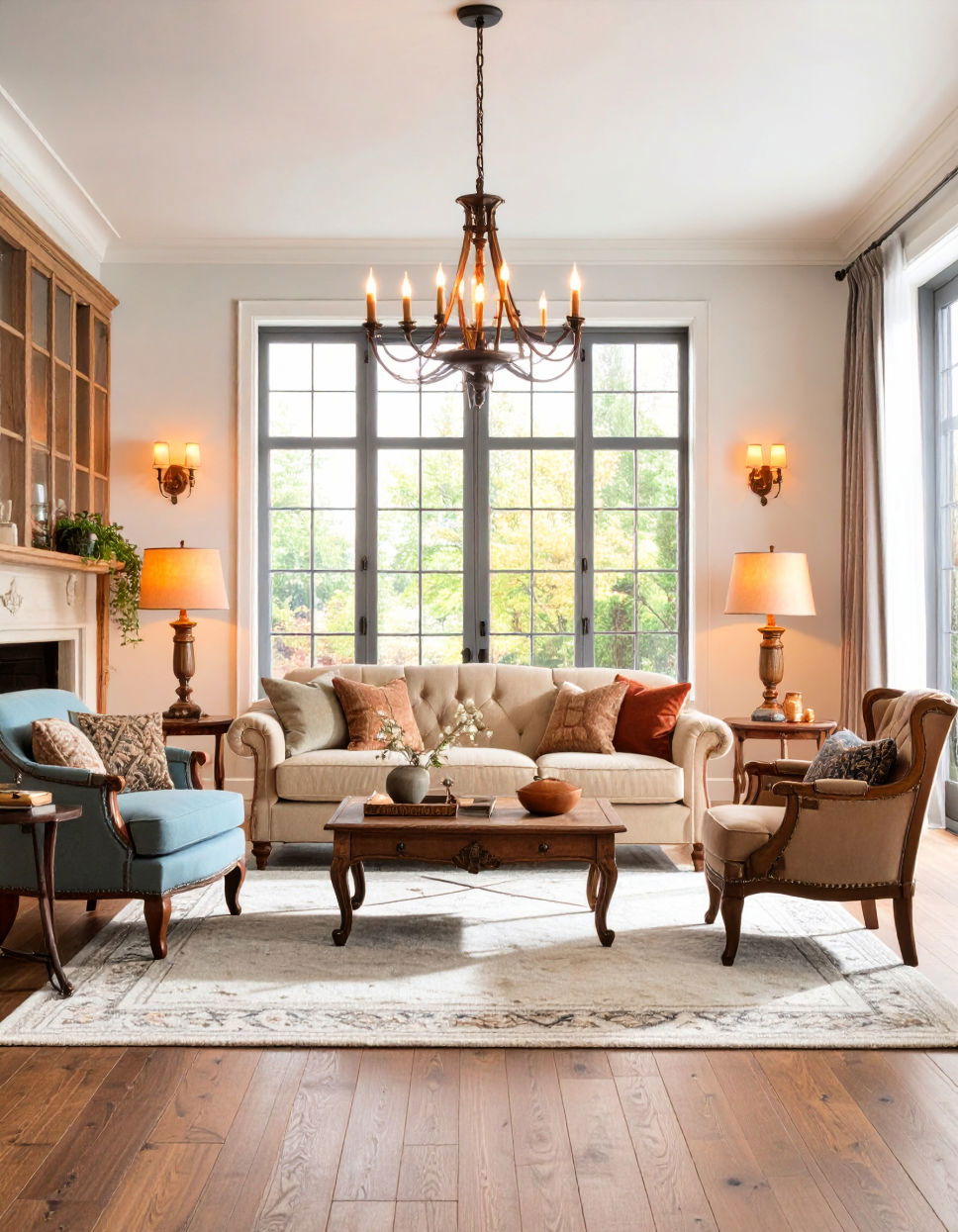
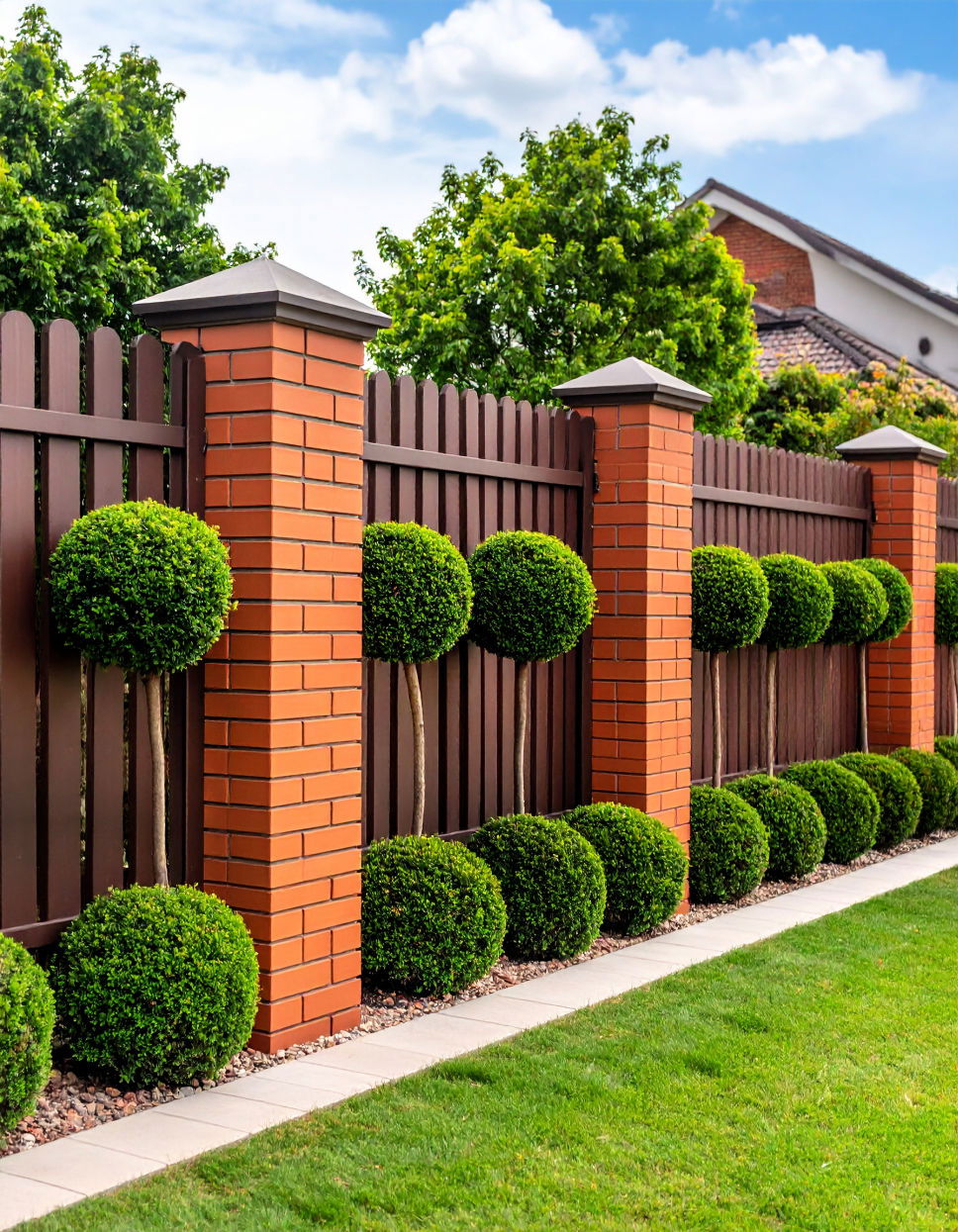
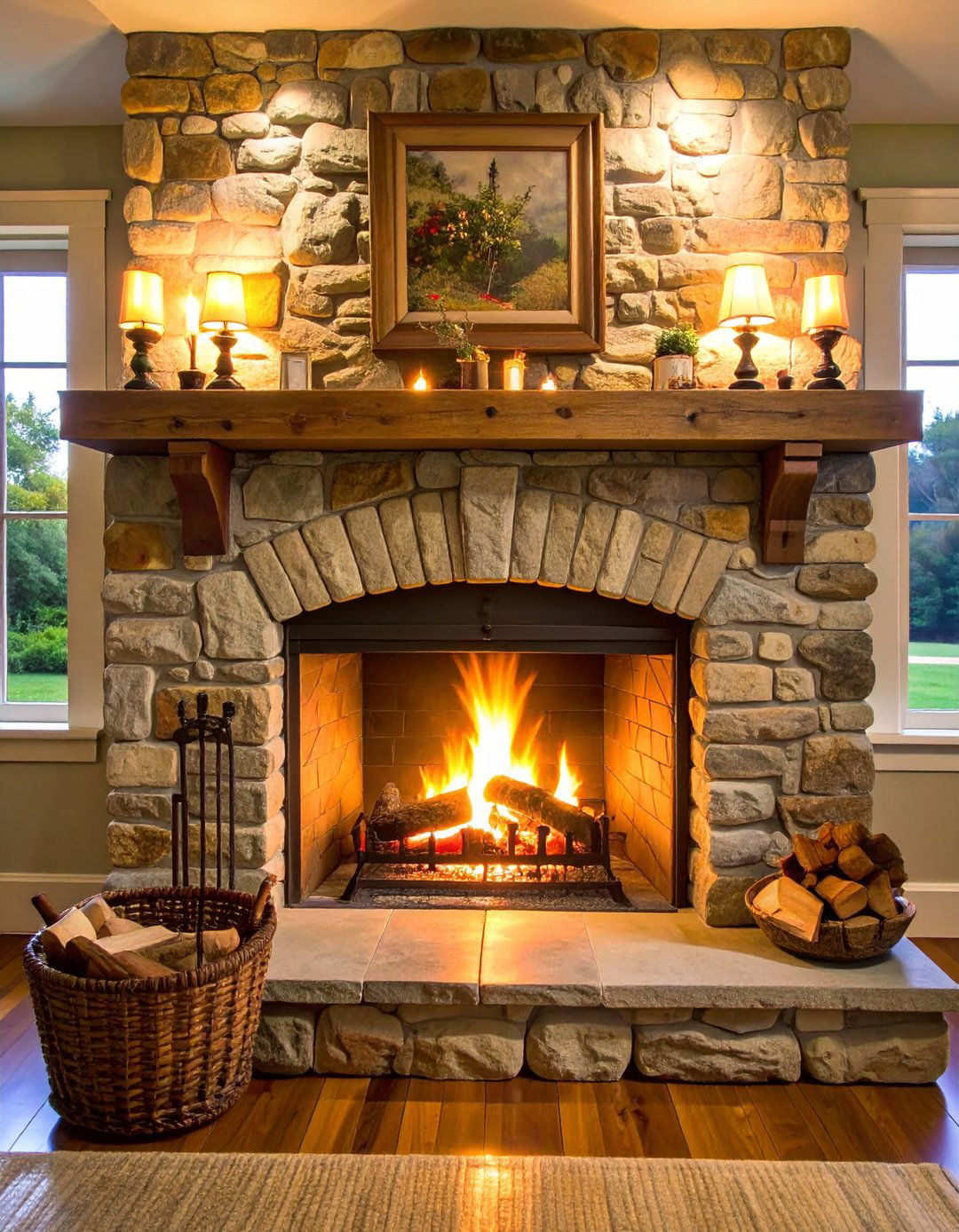
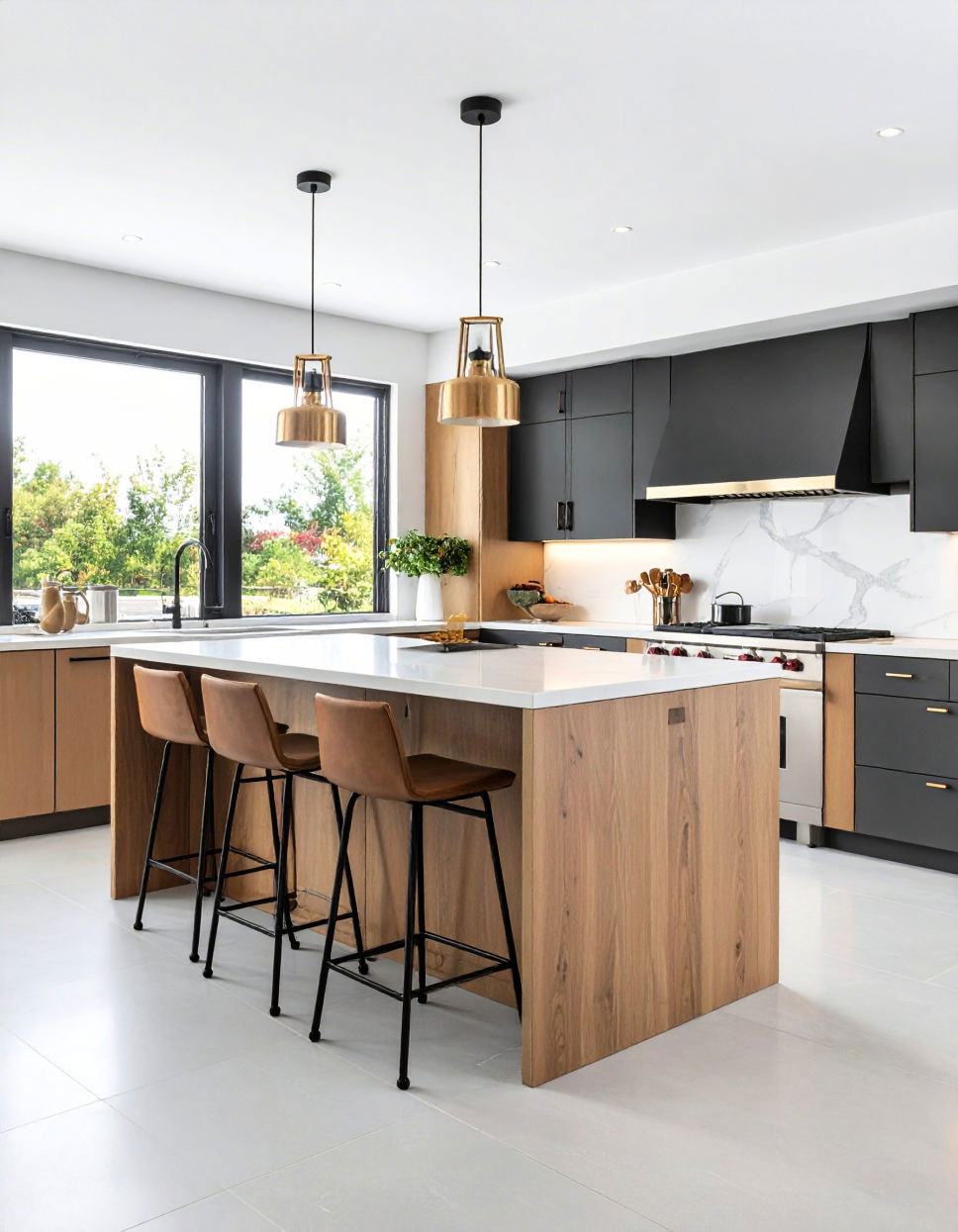
Leave a Reply